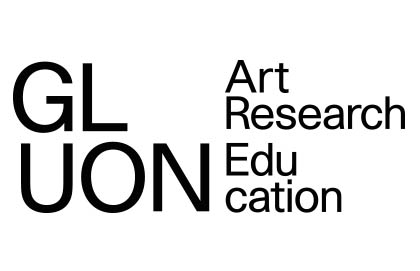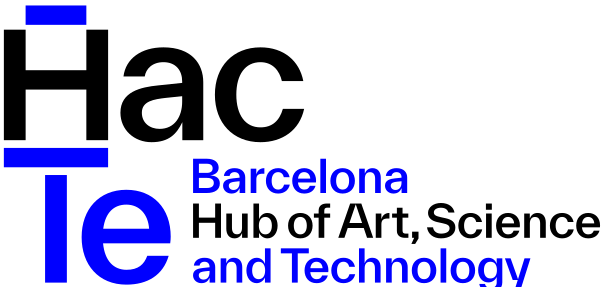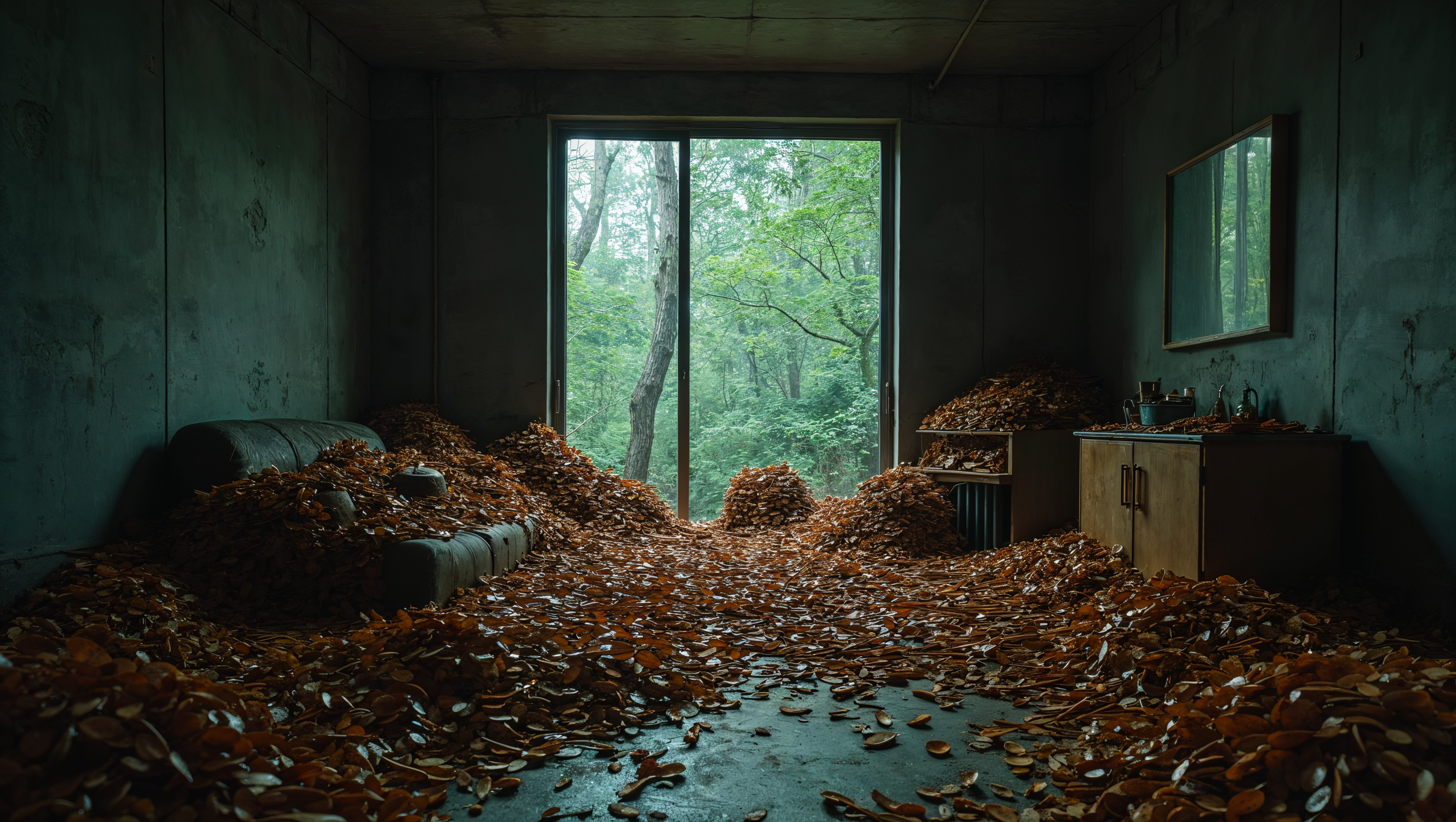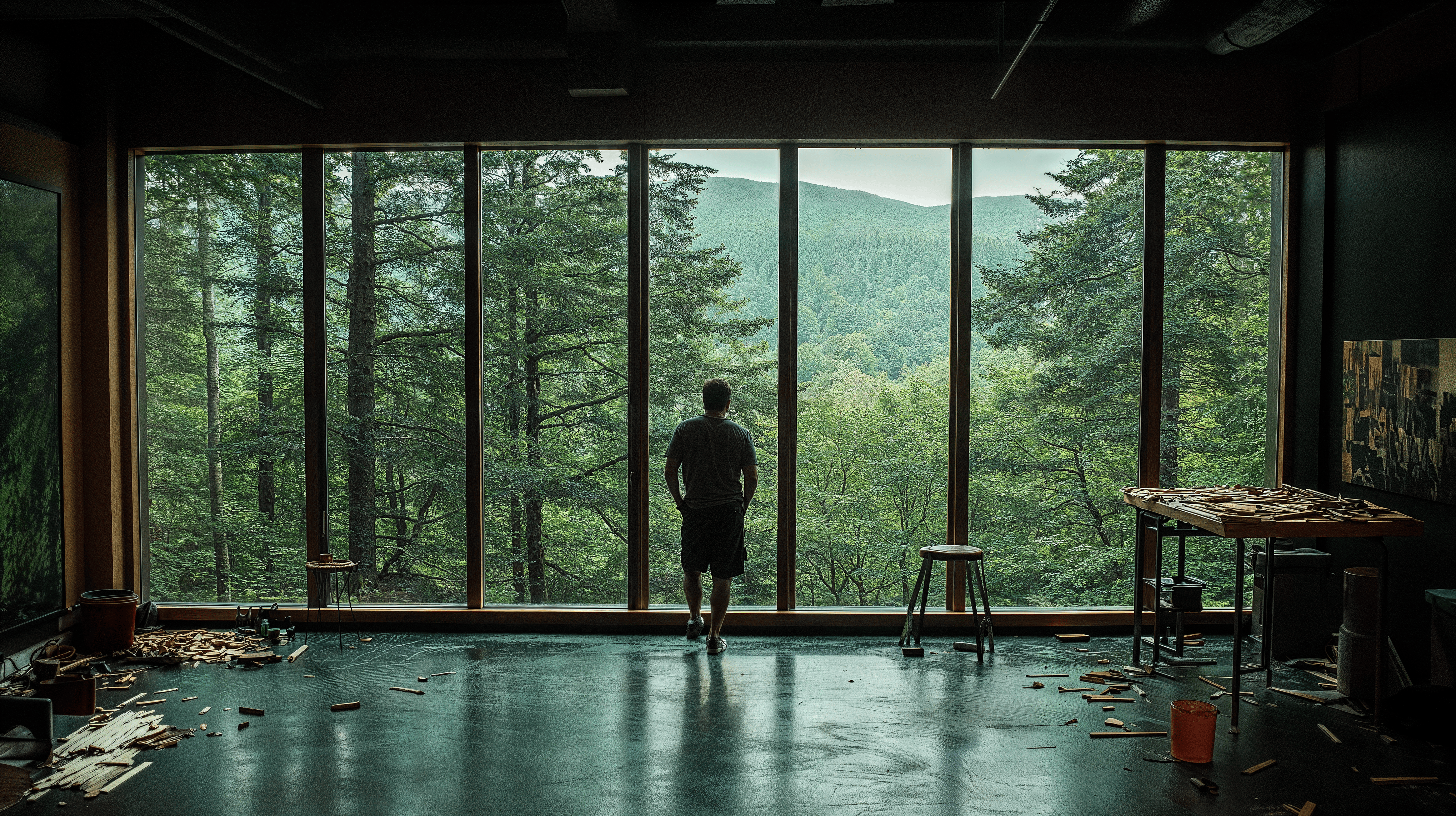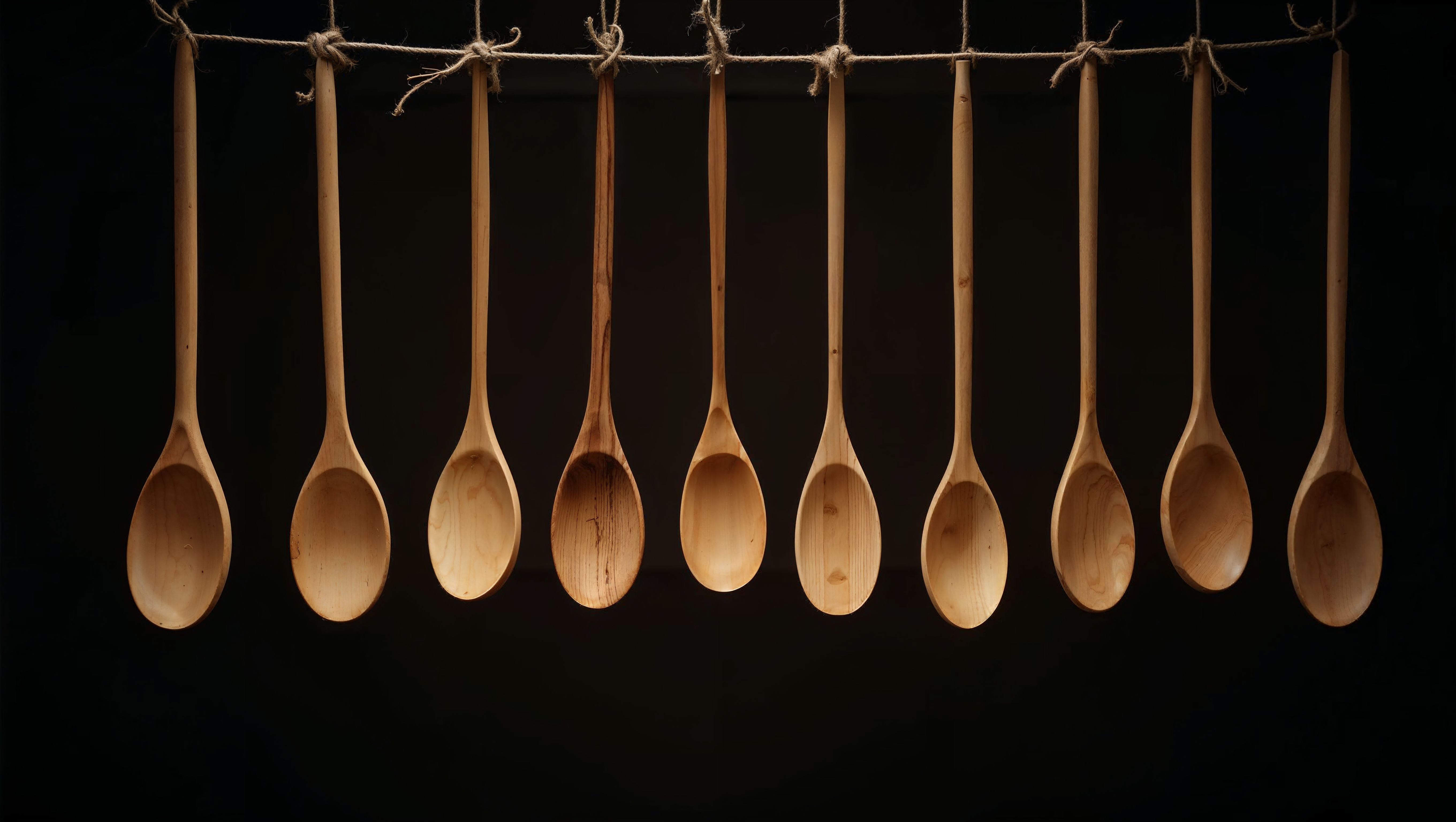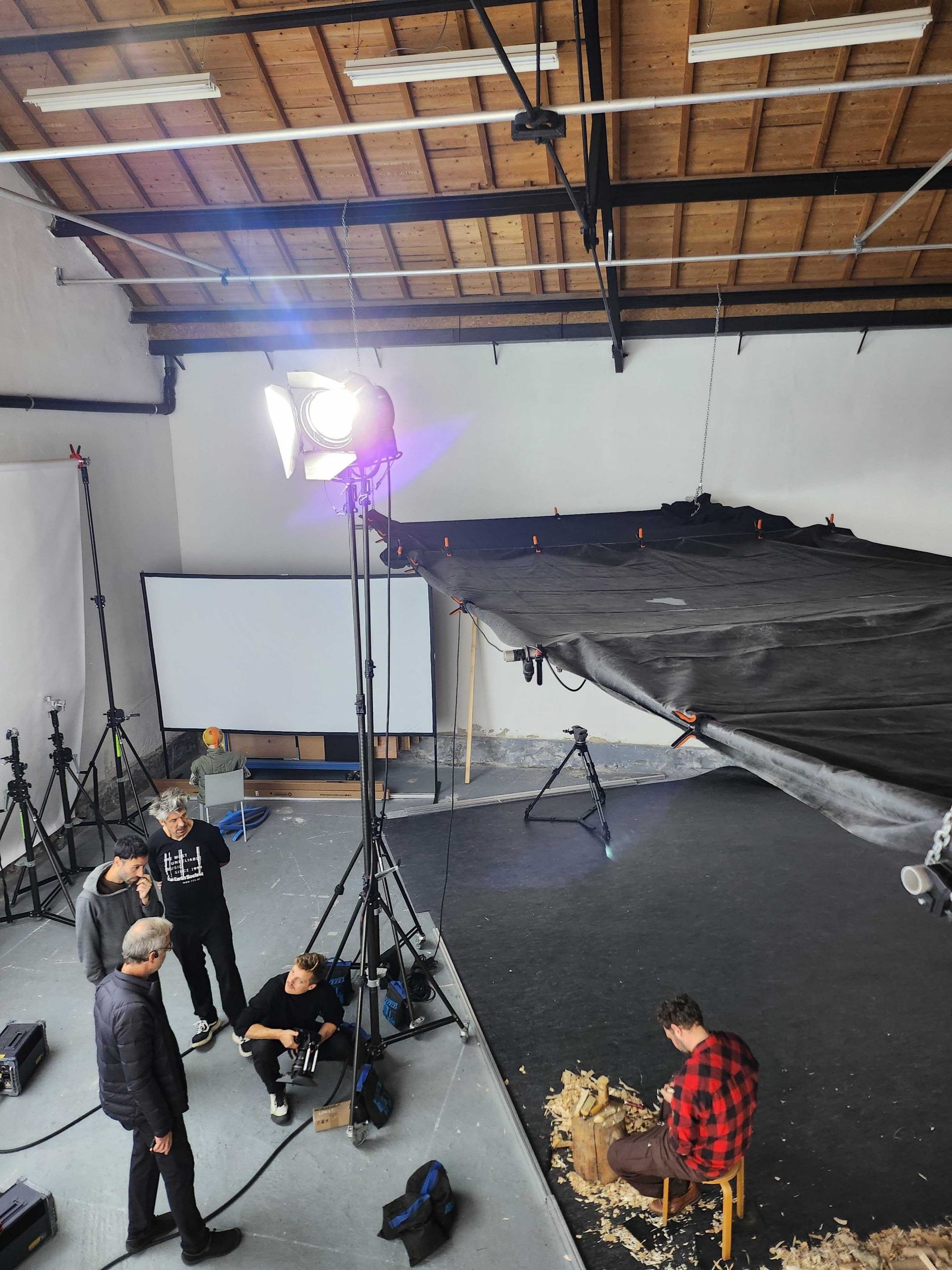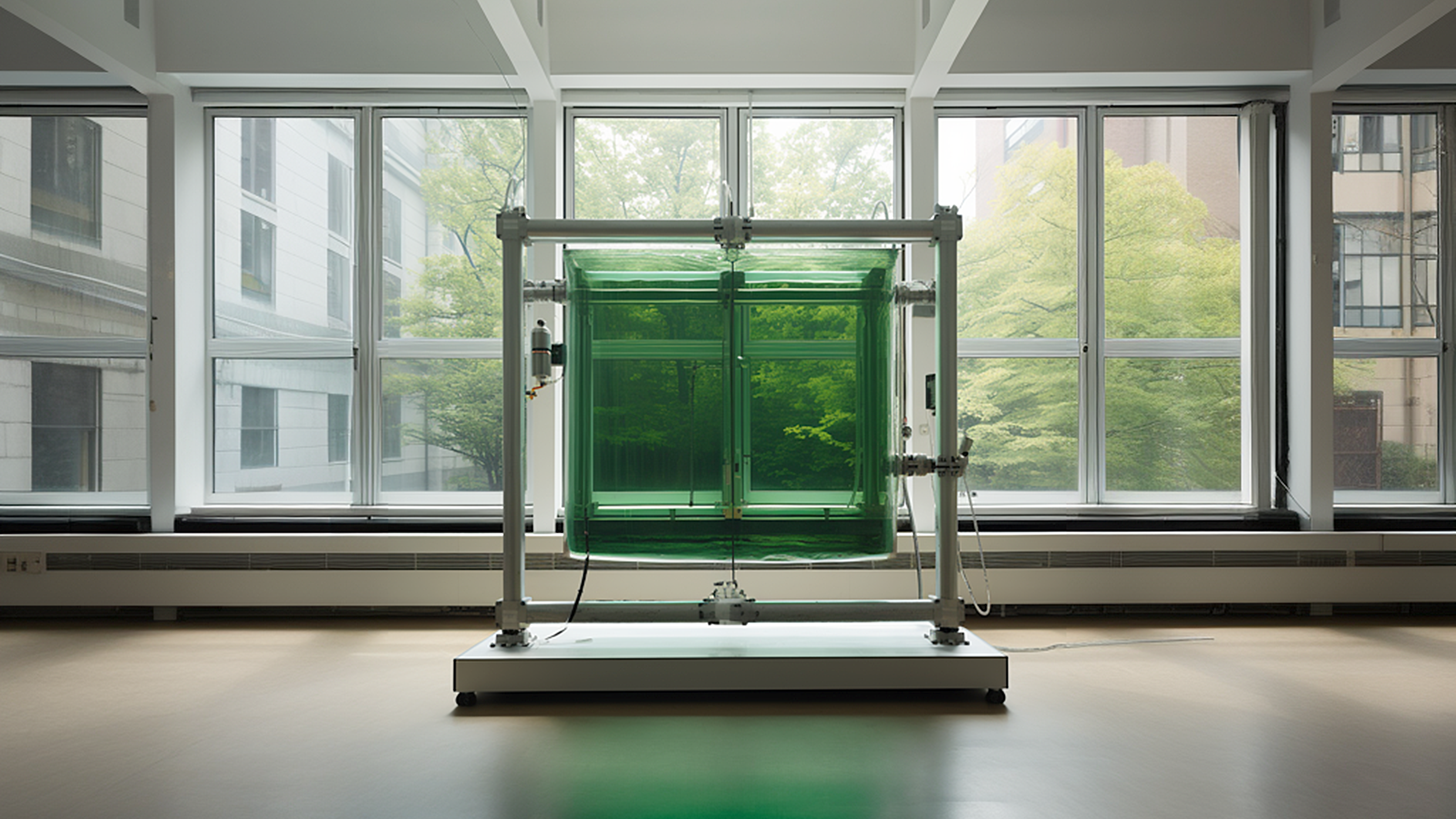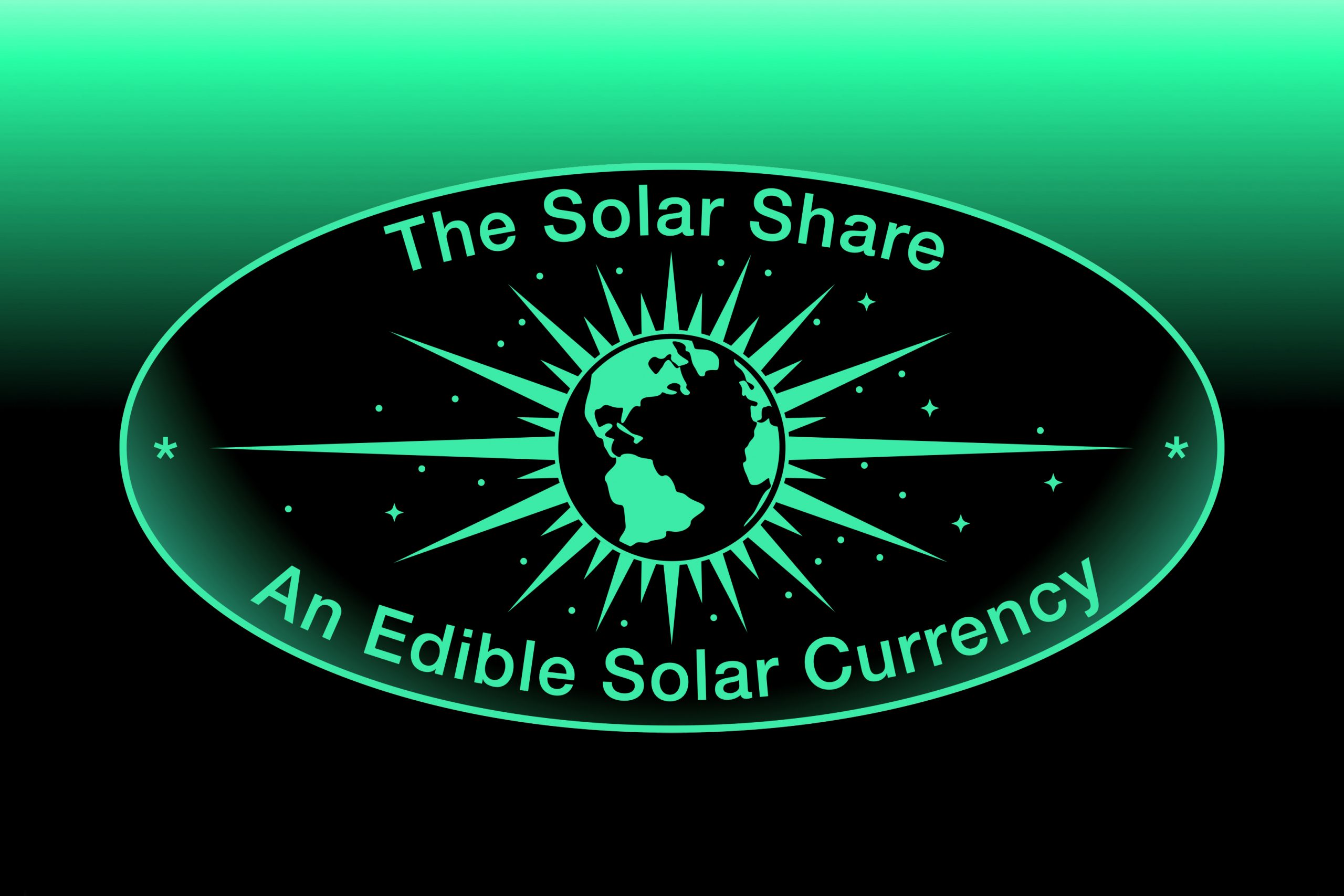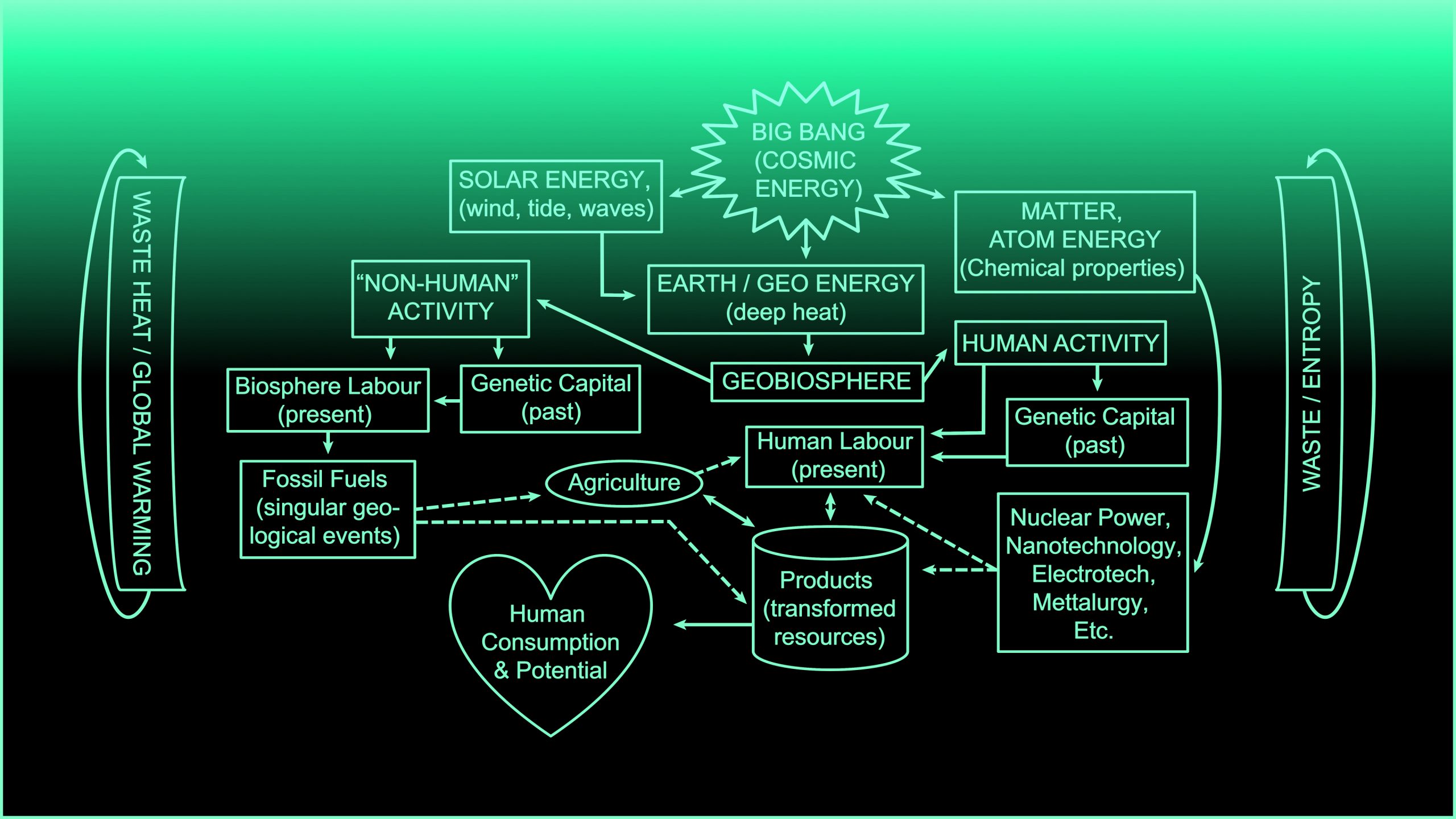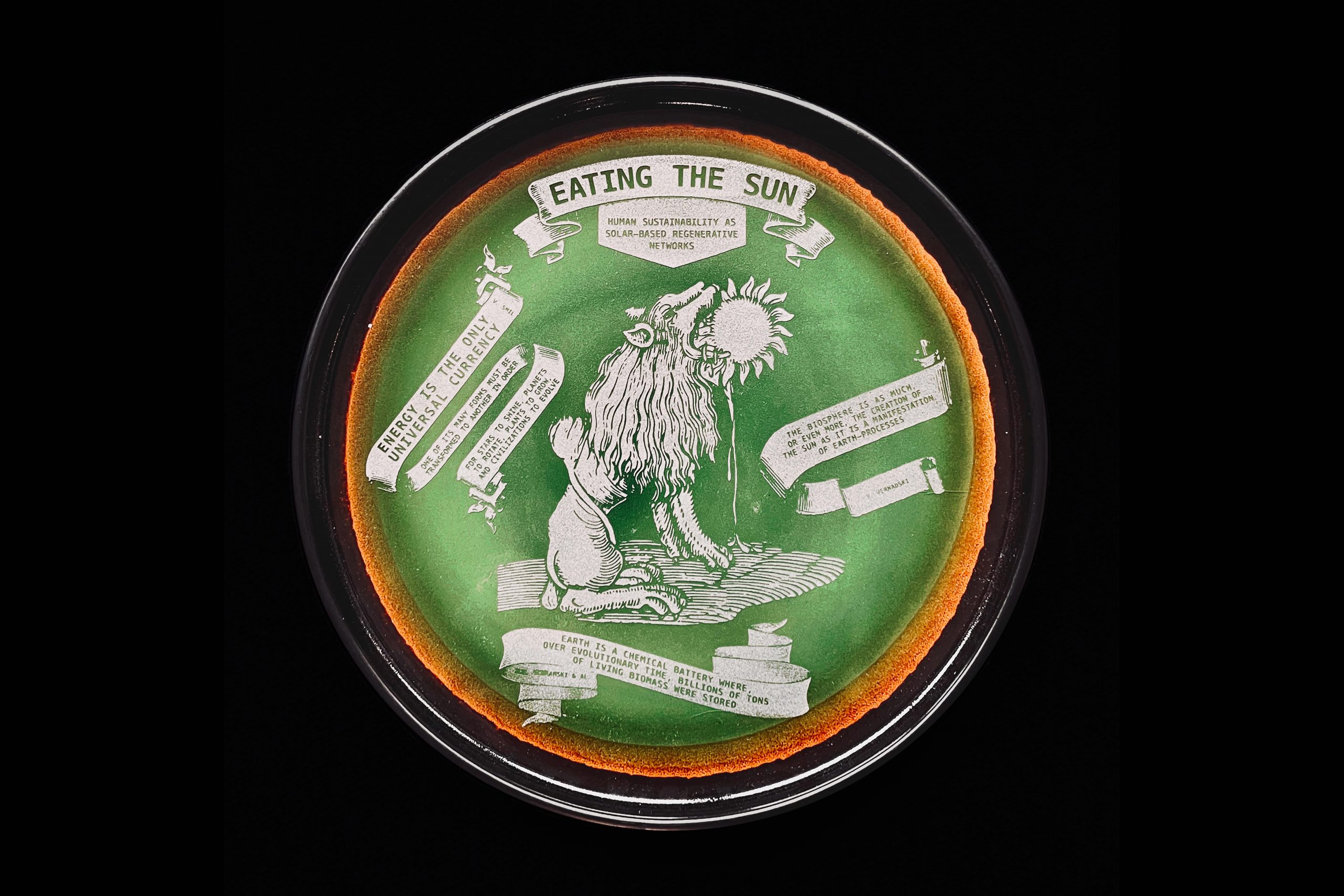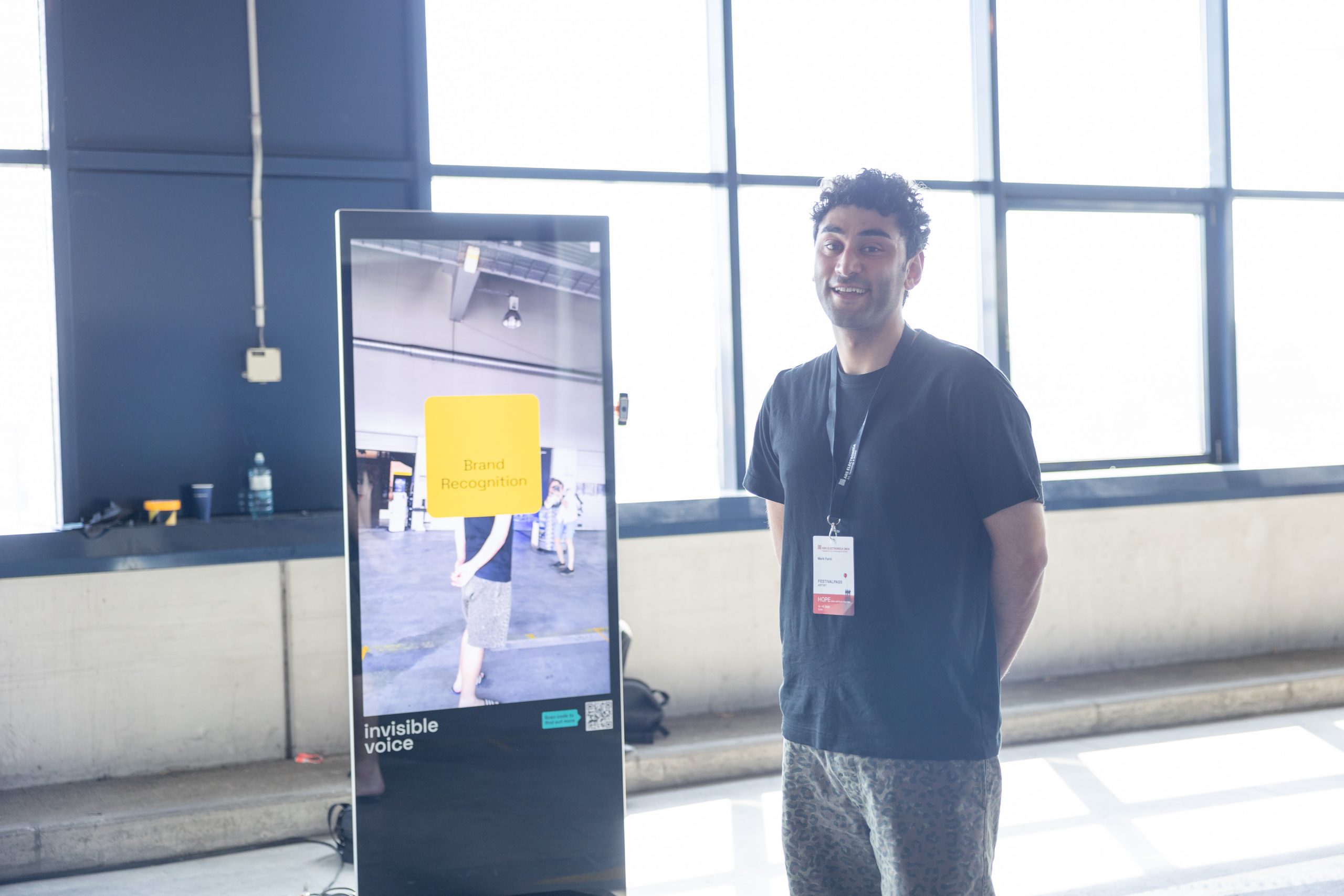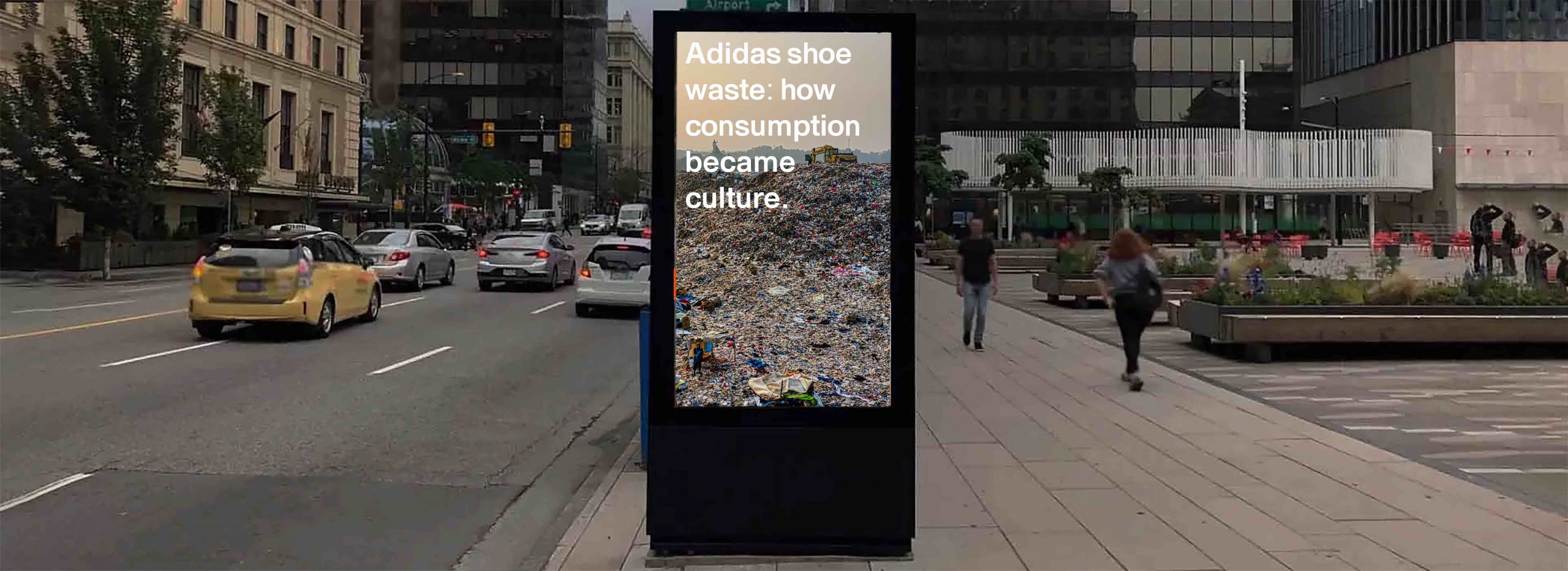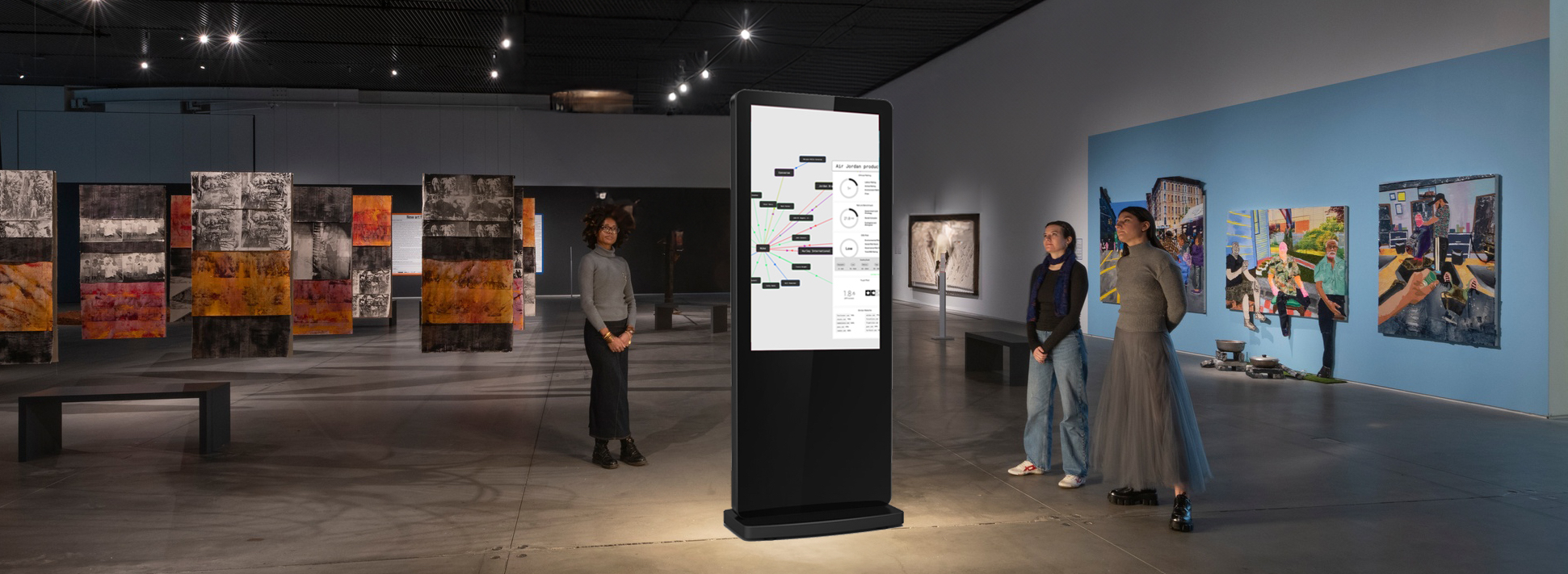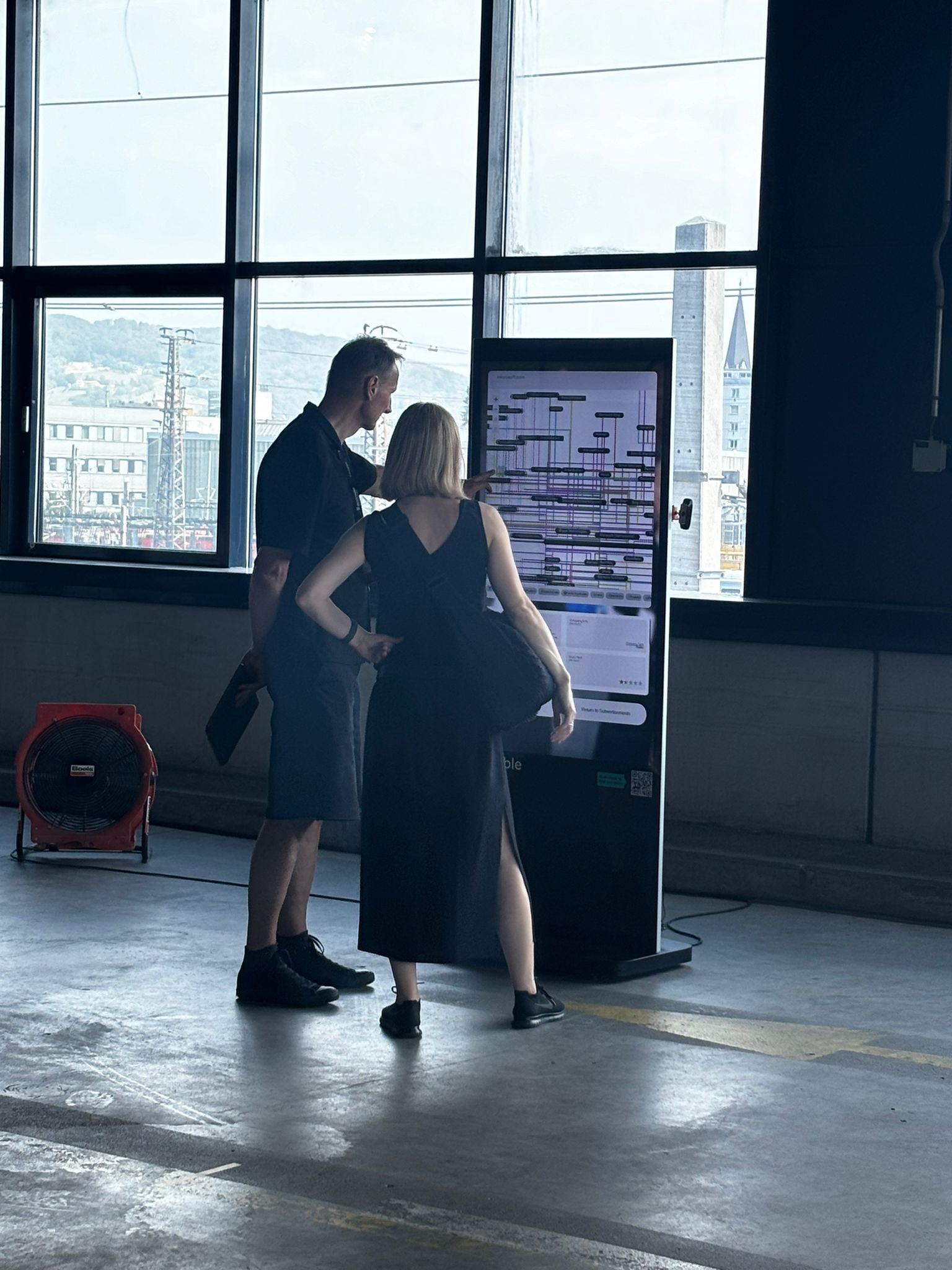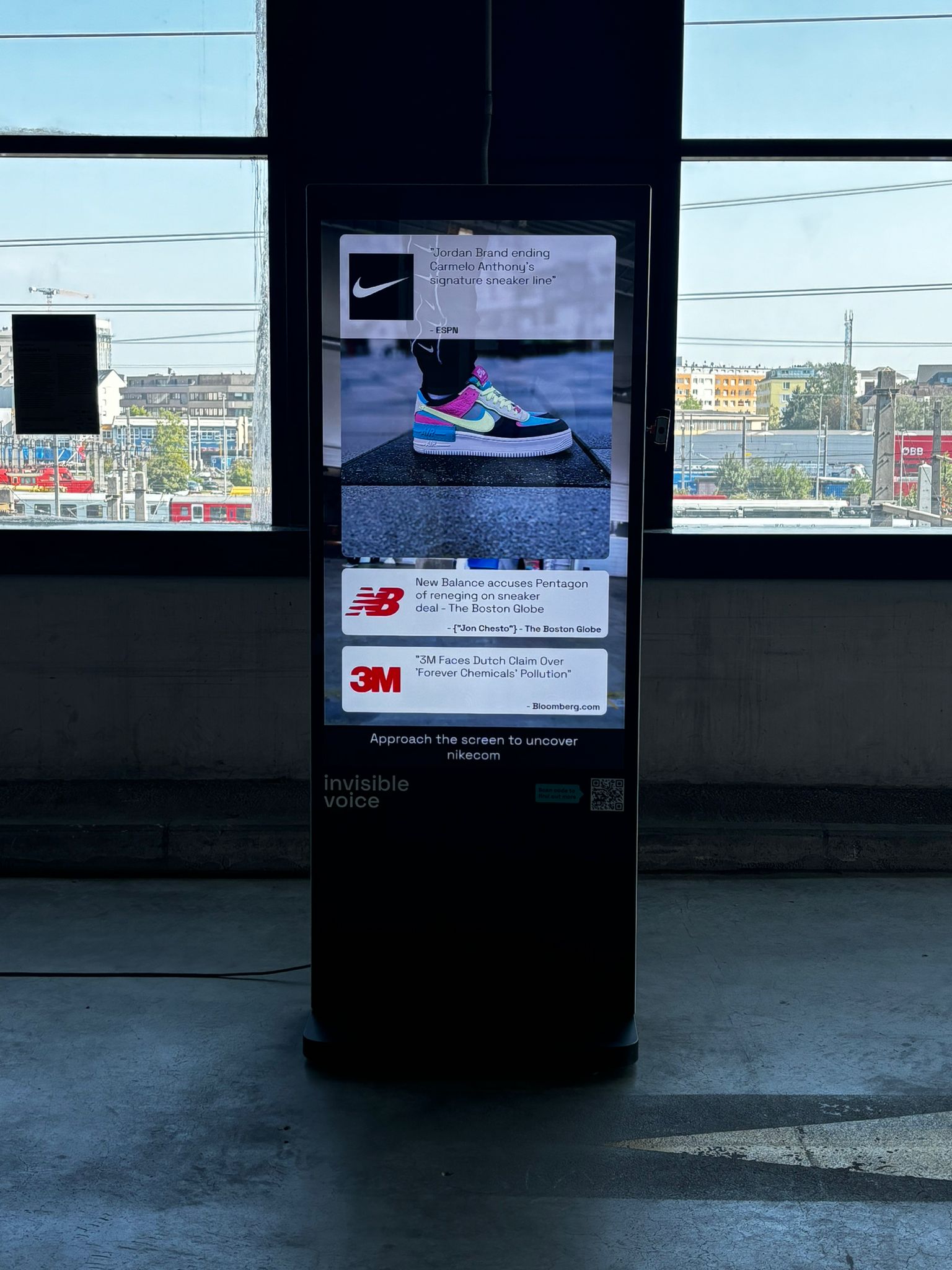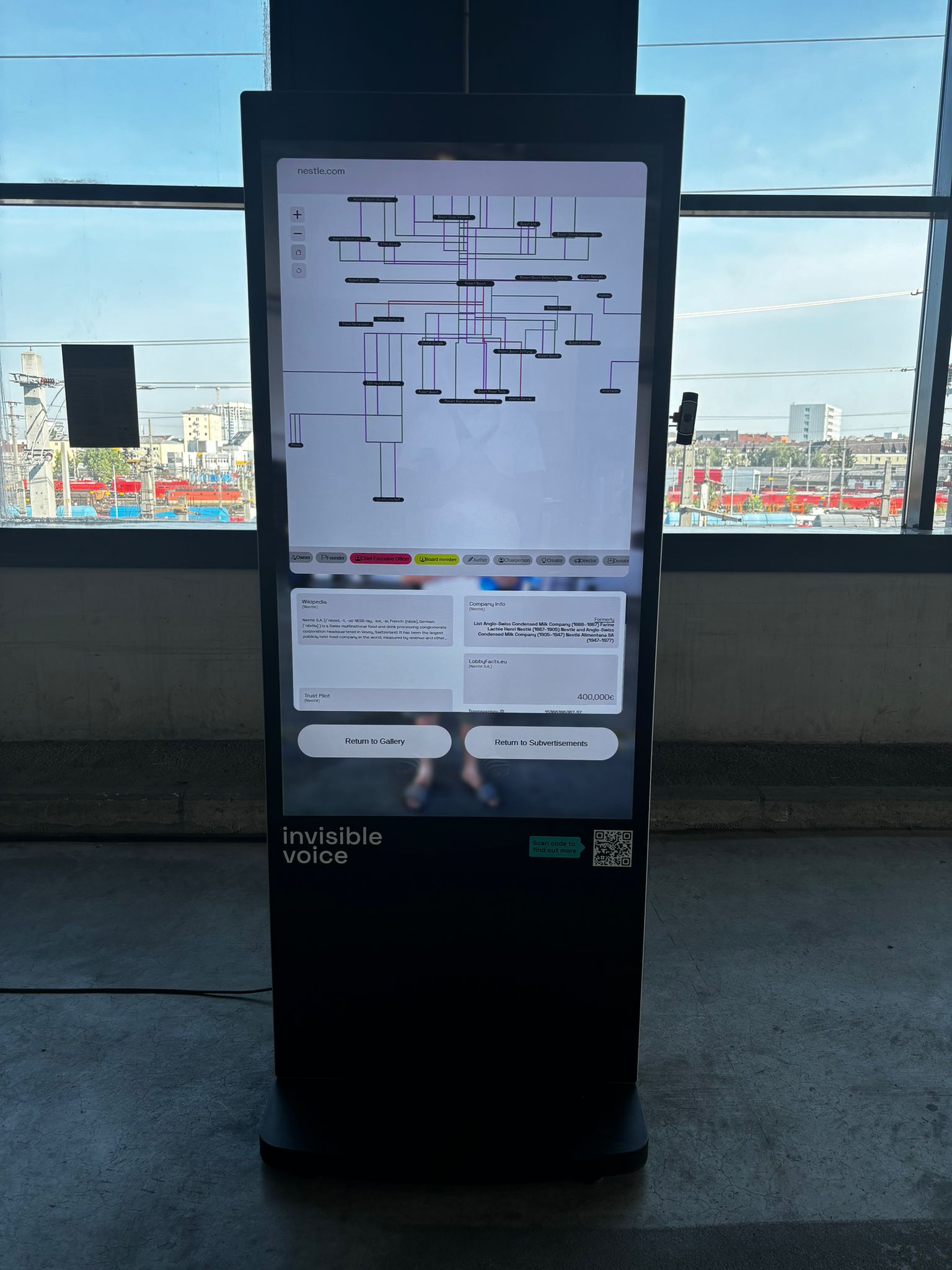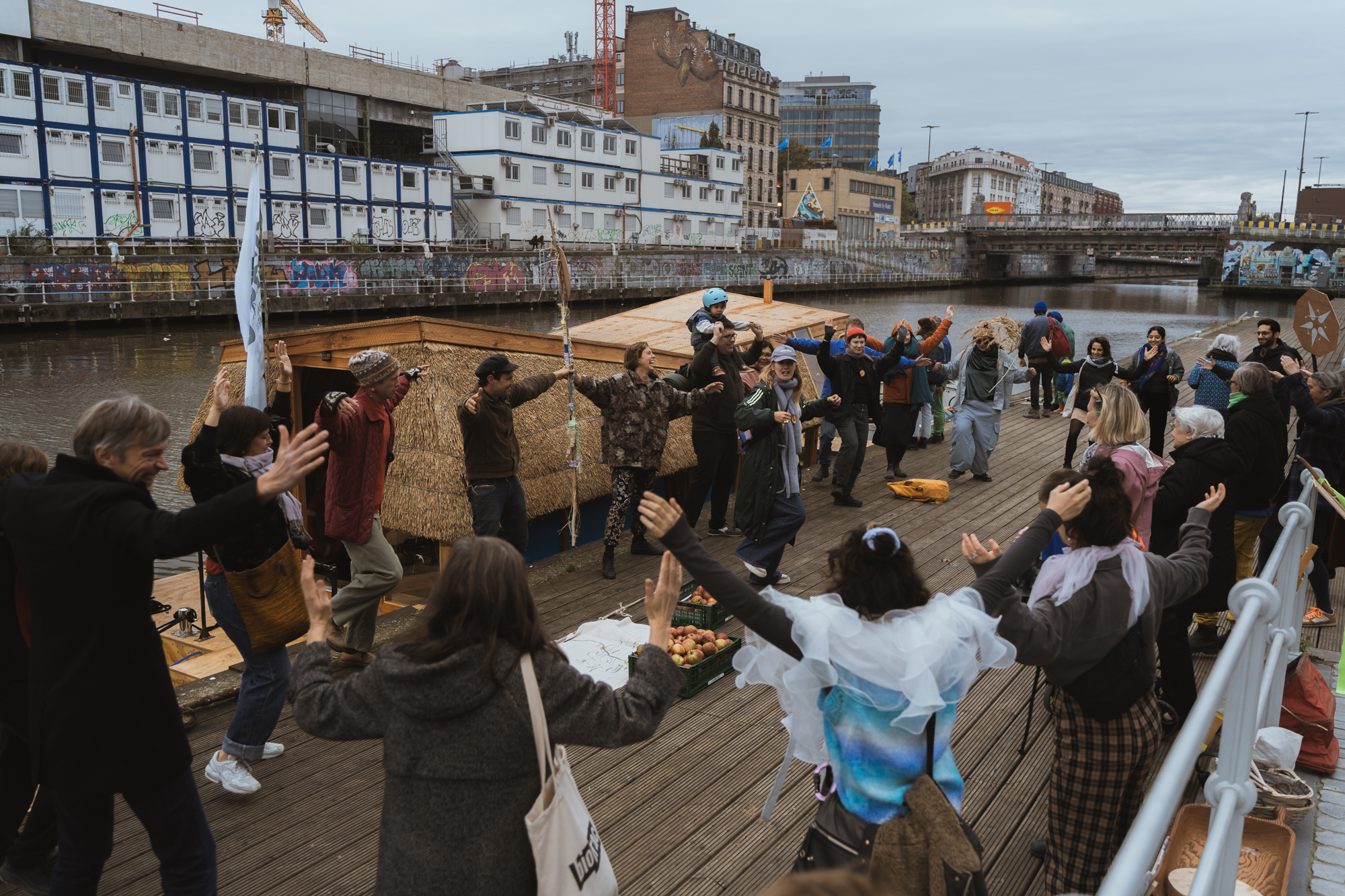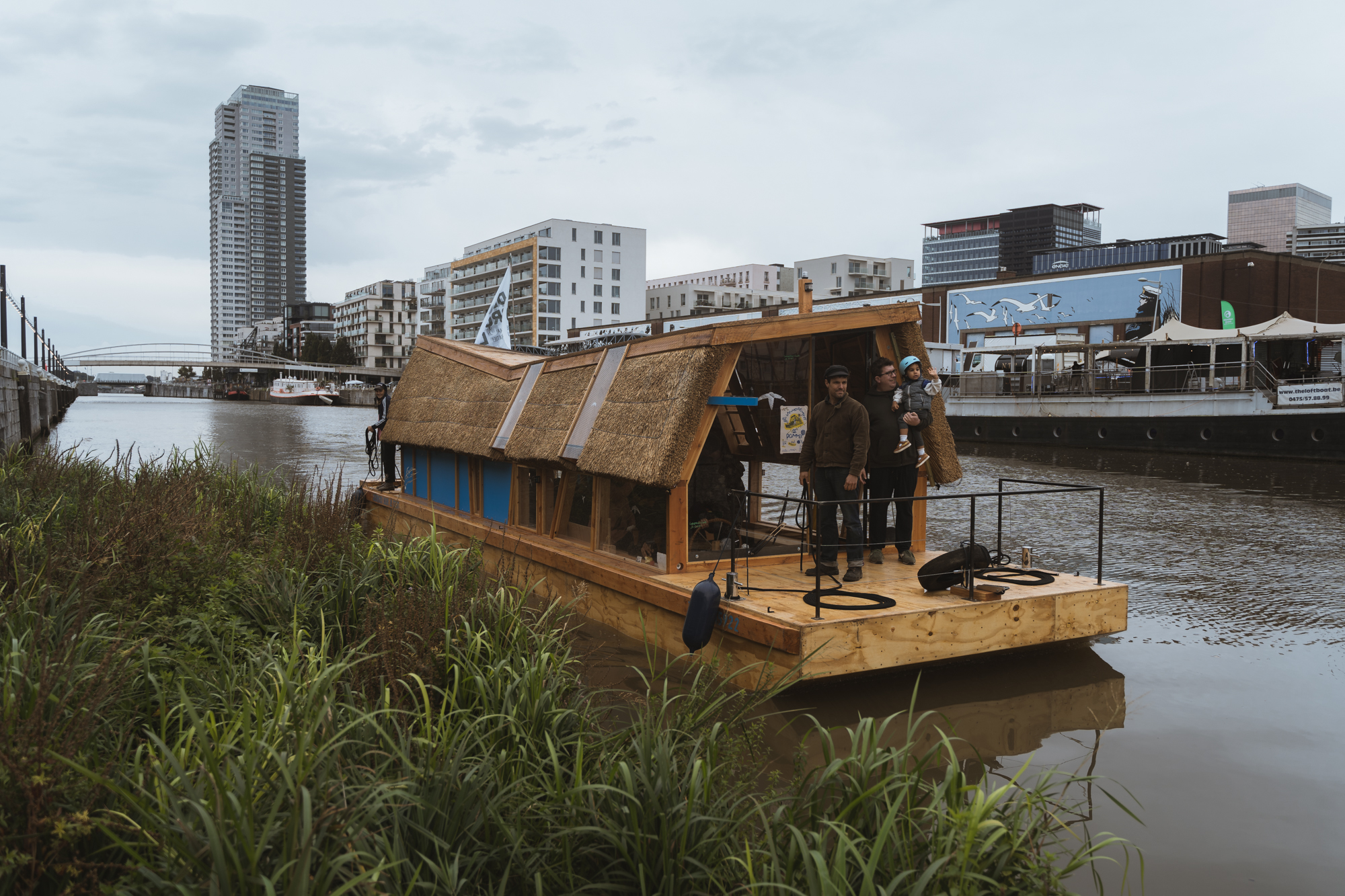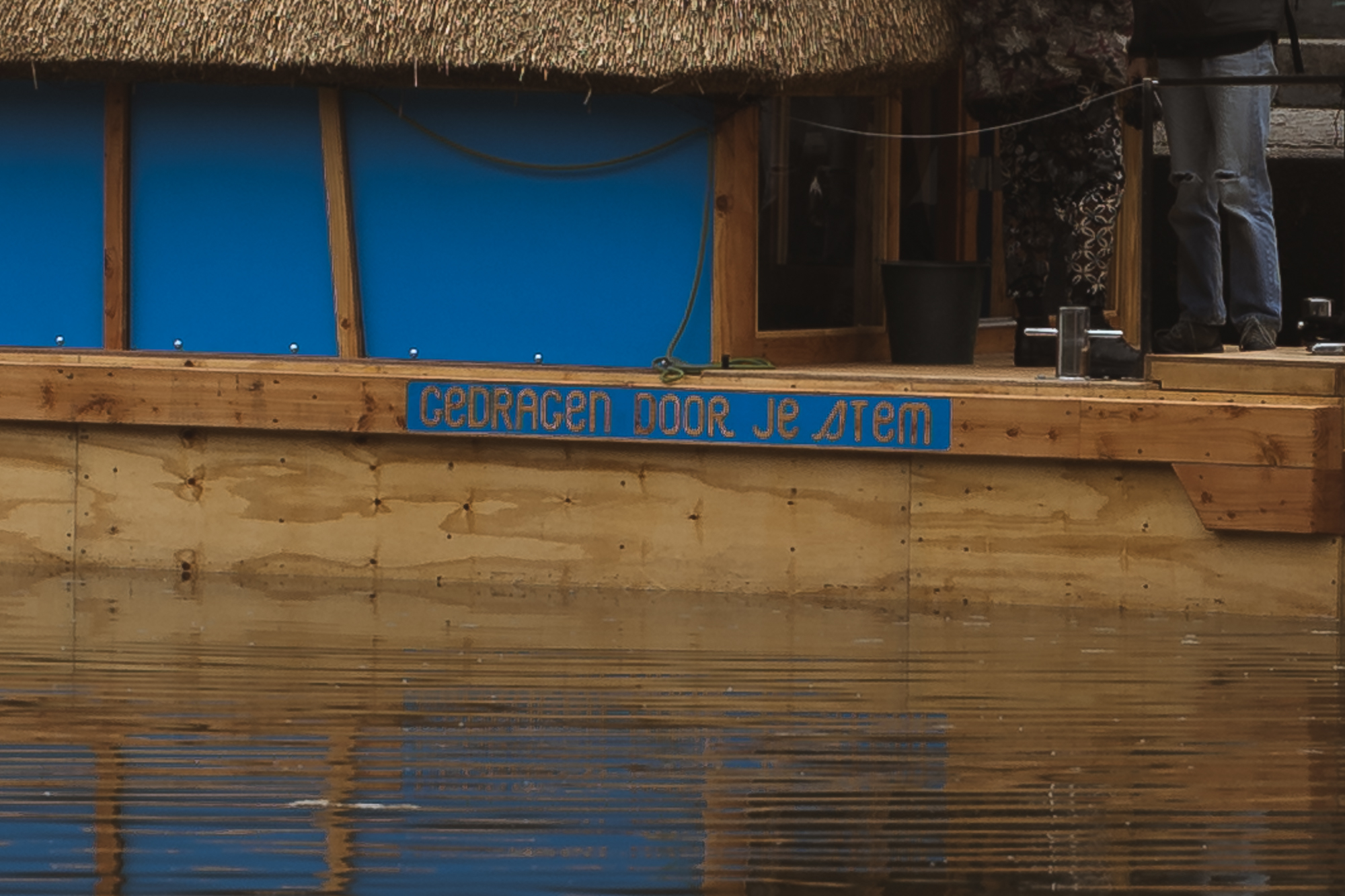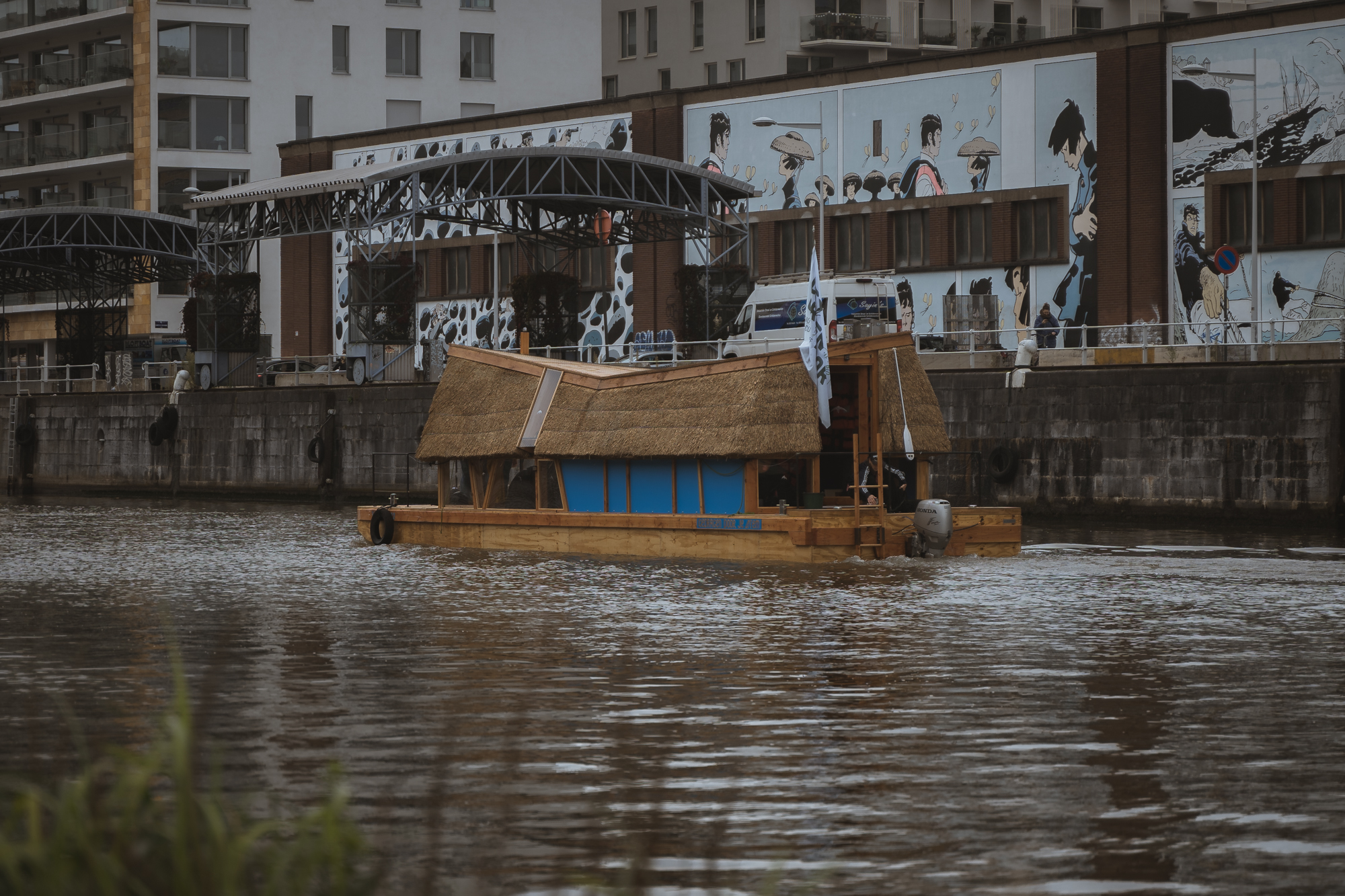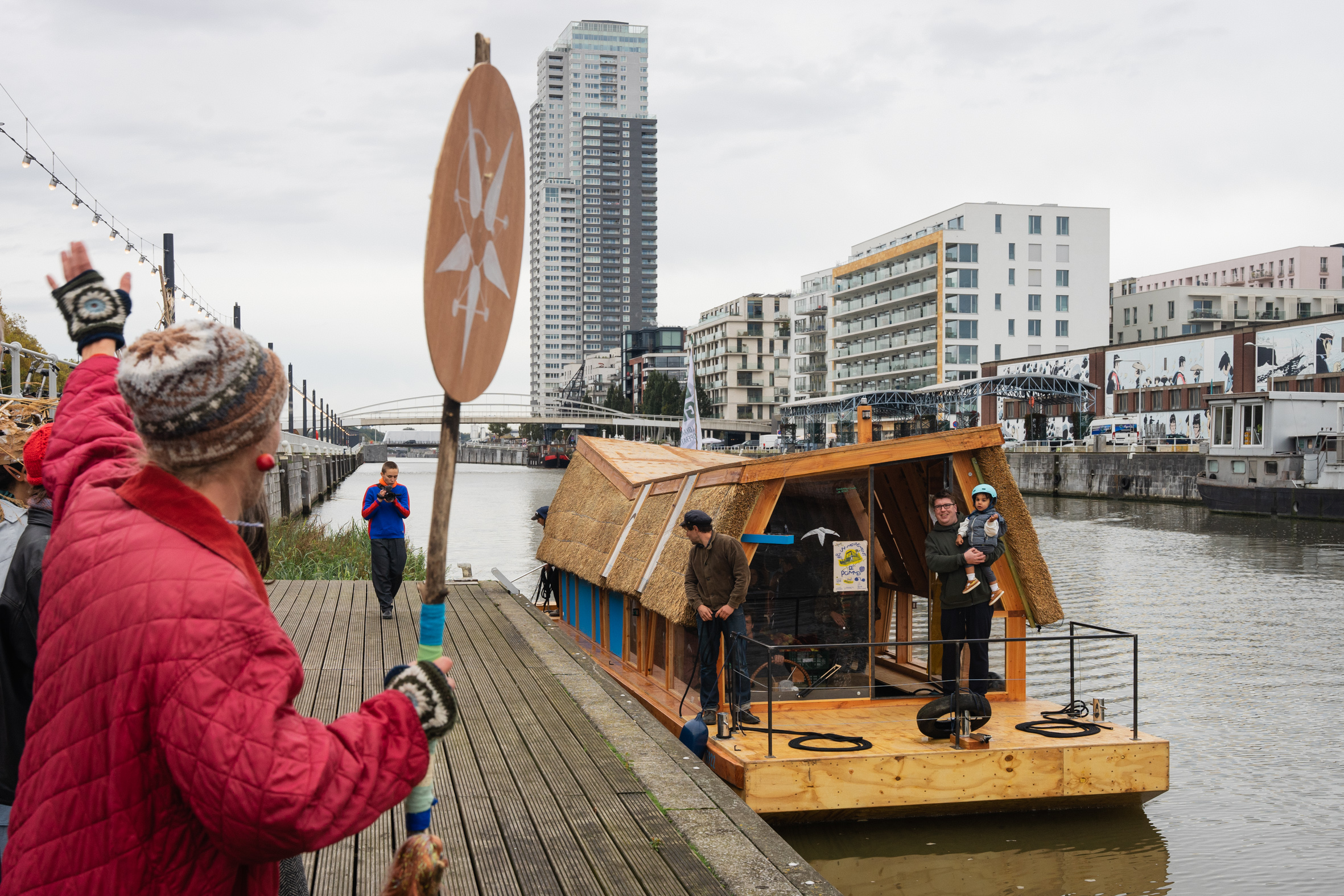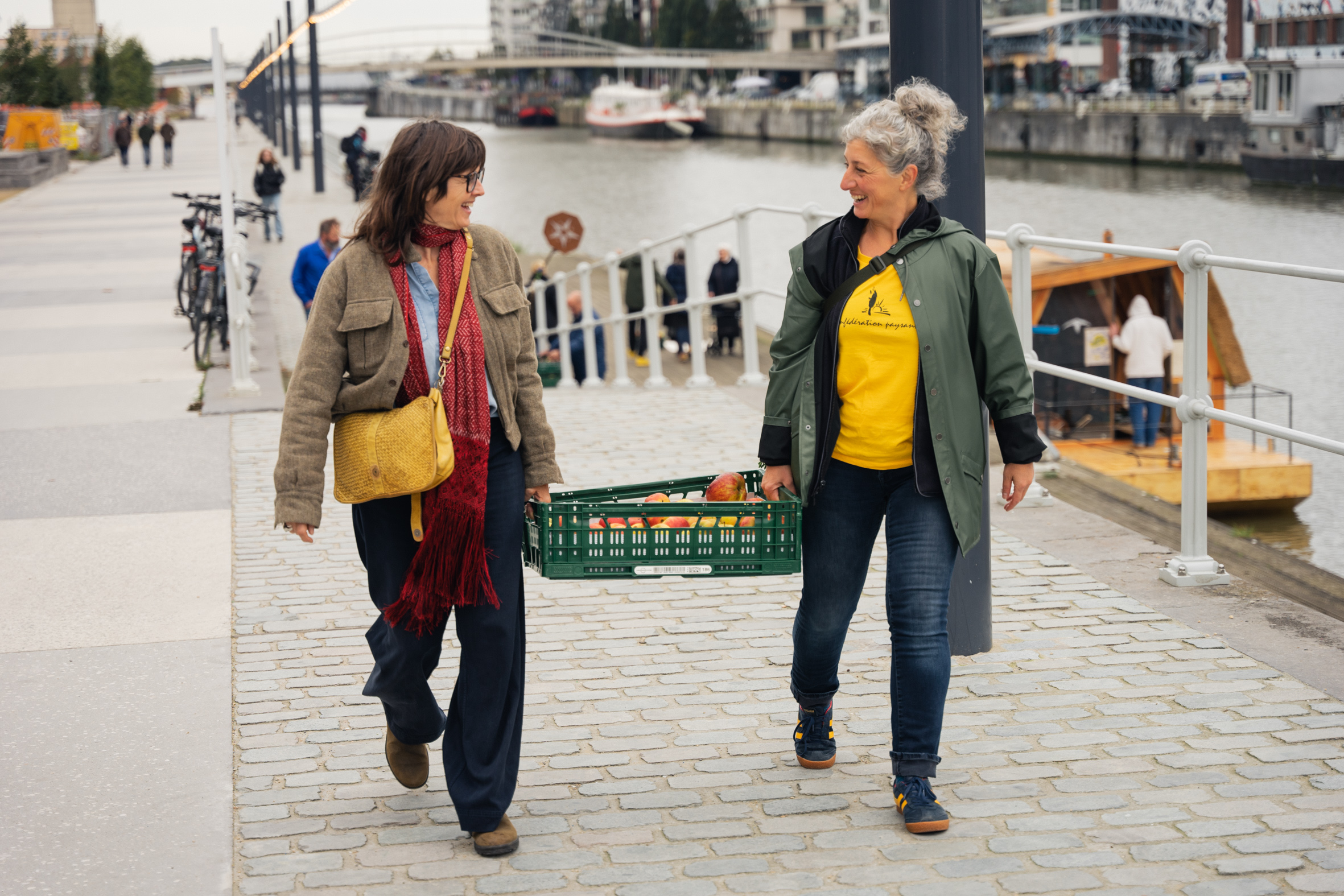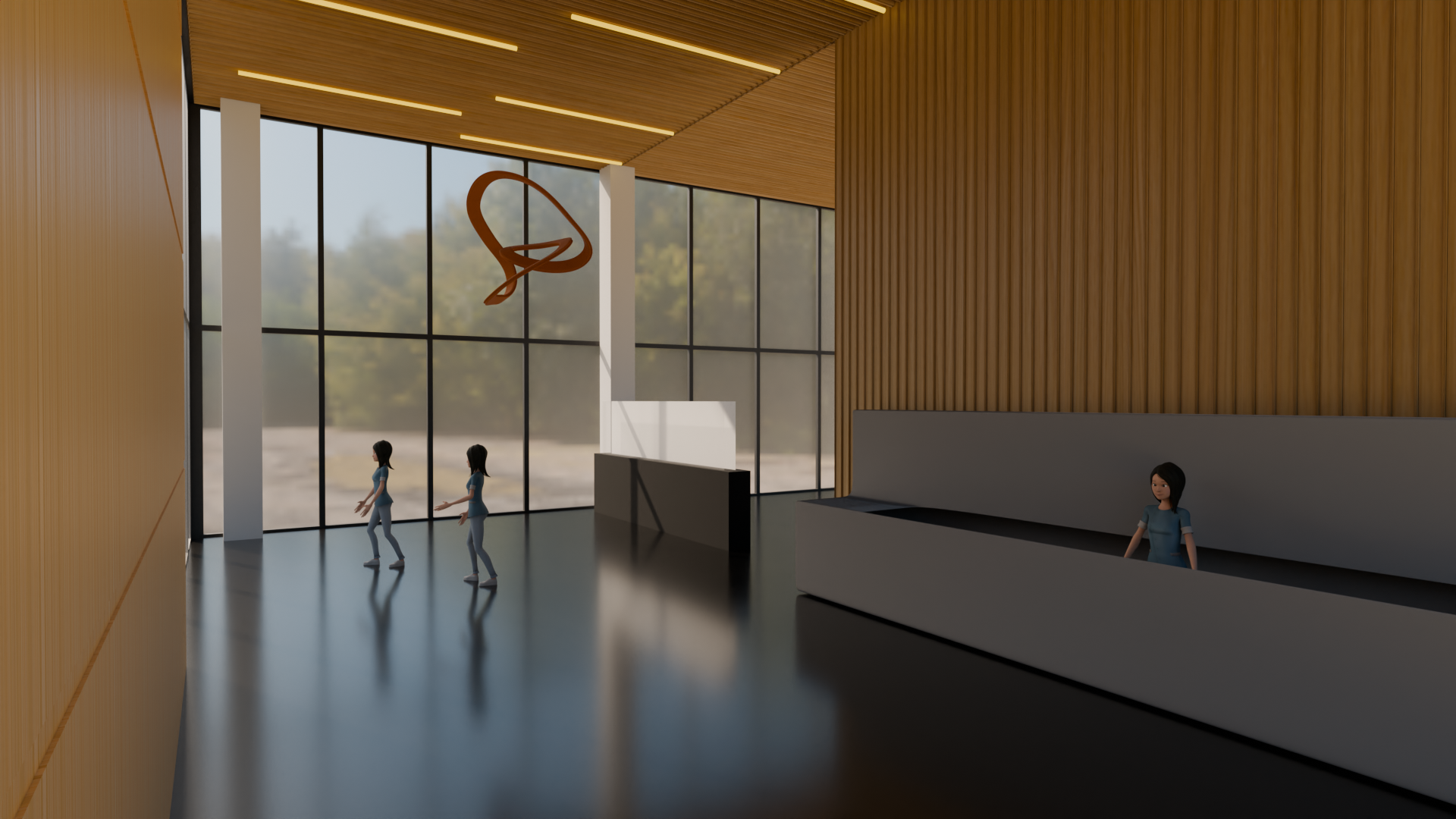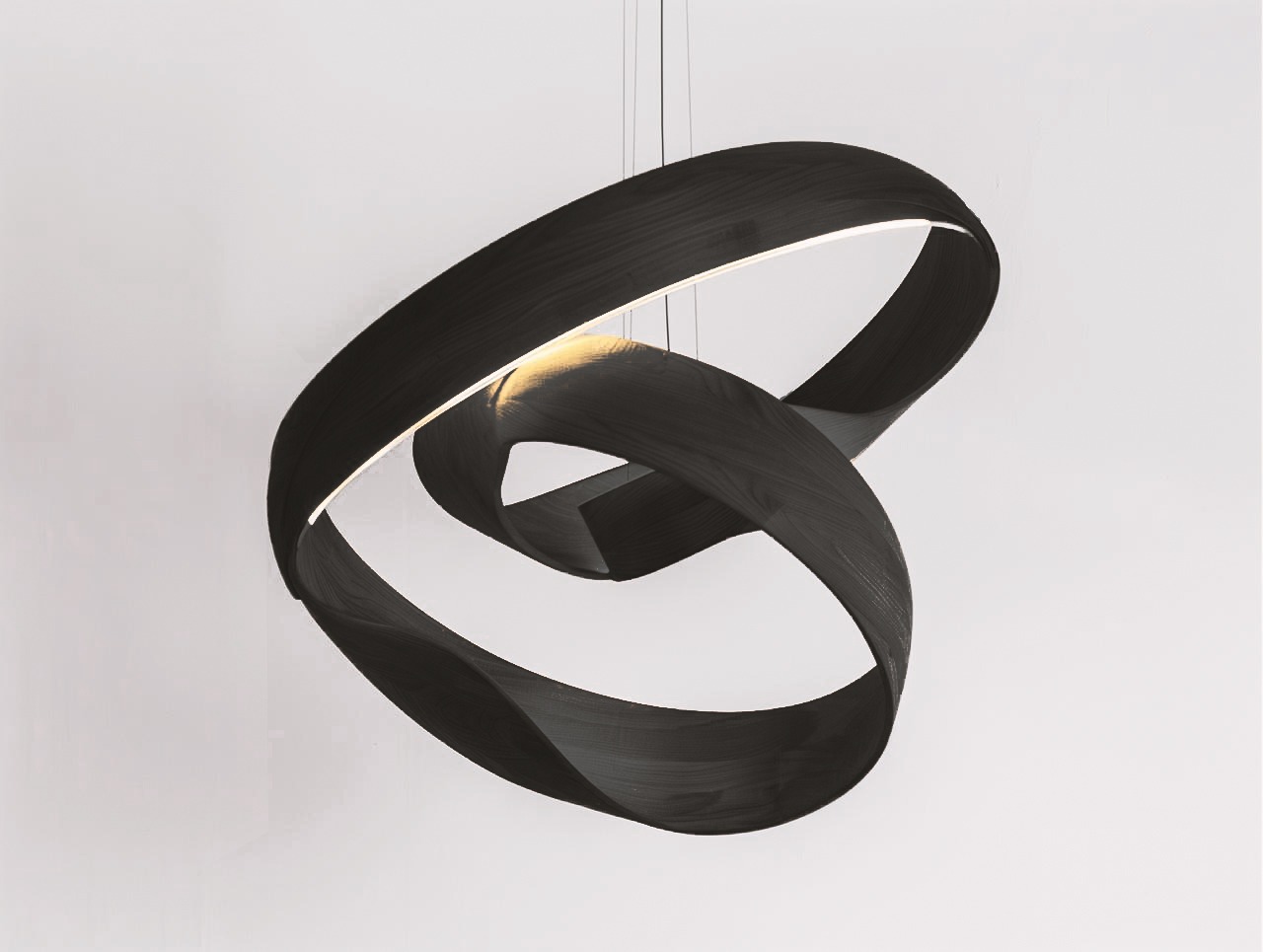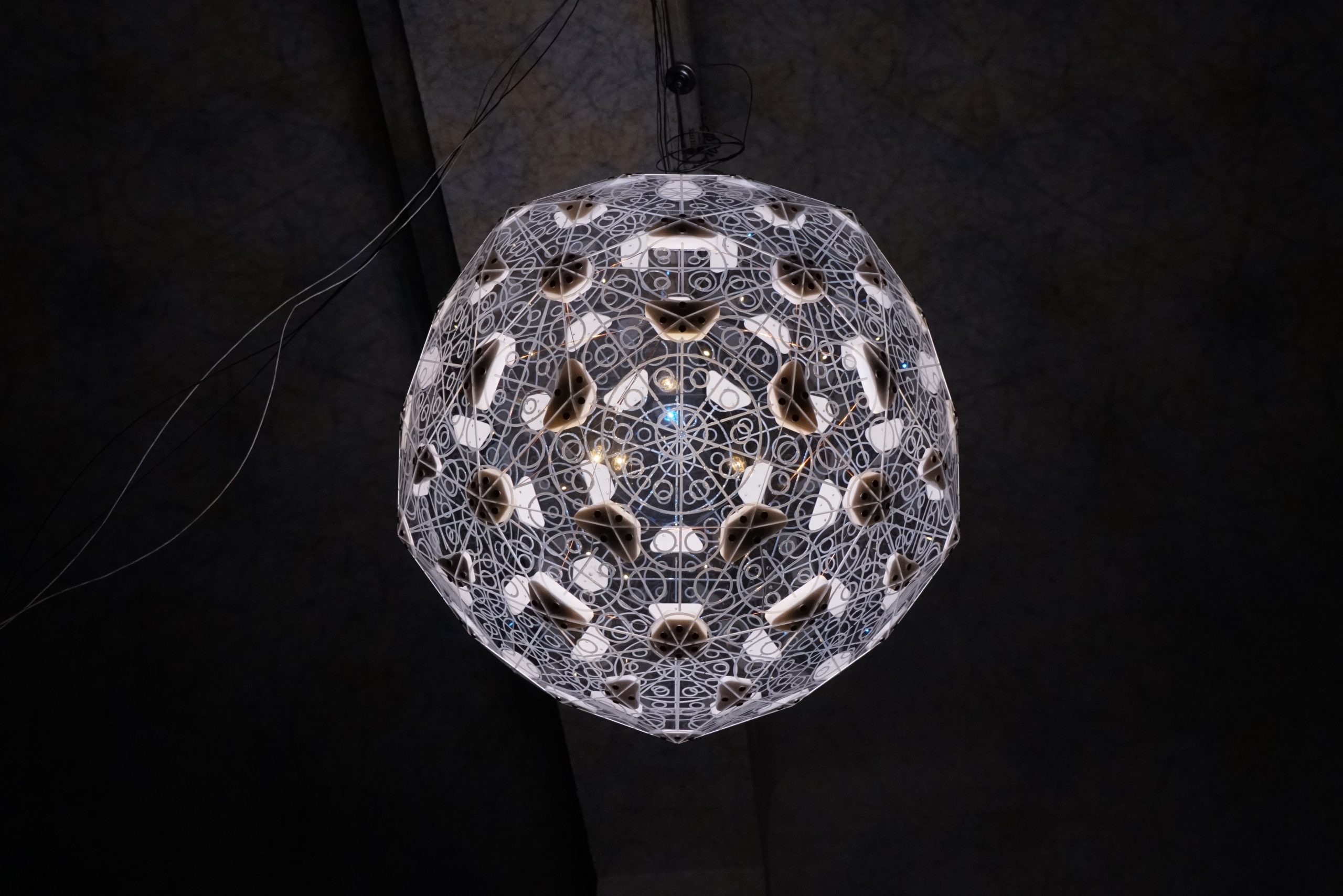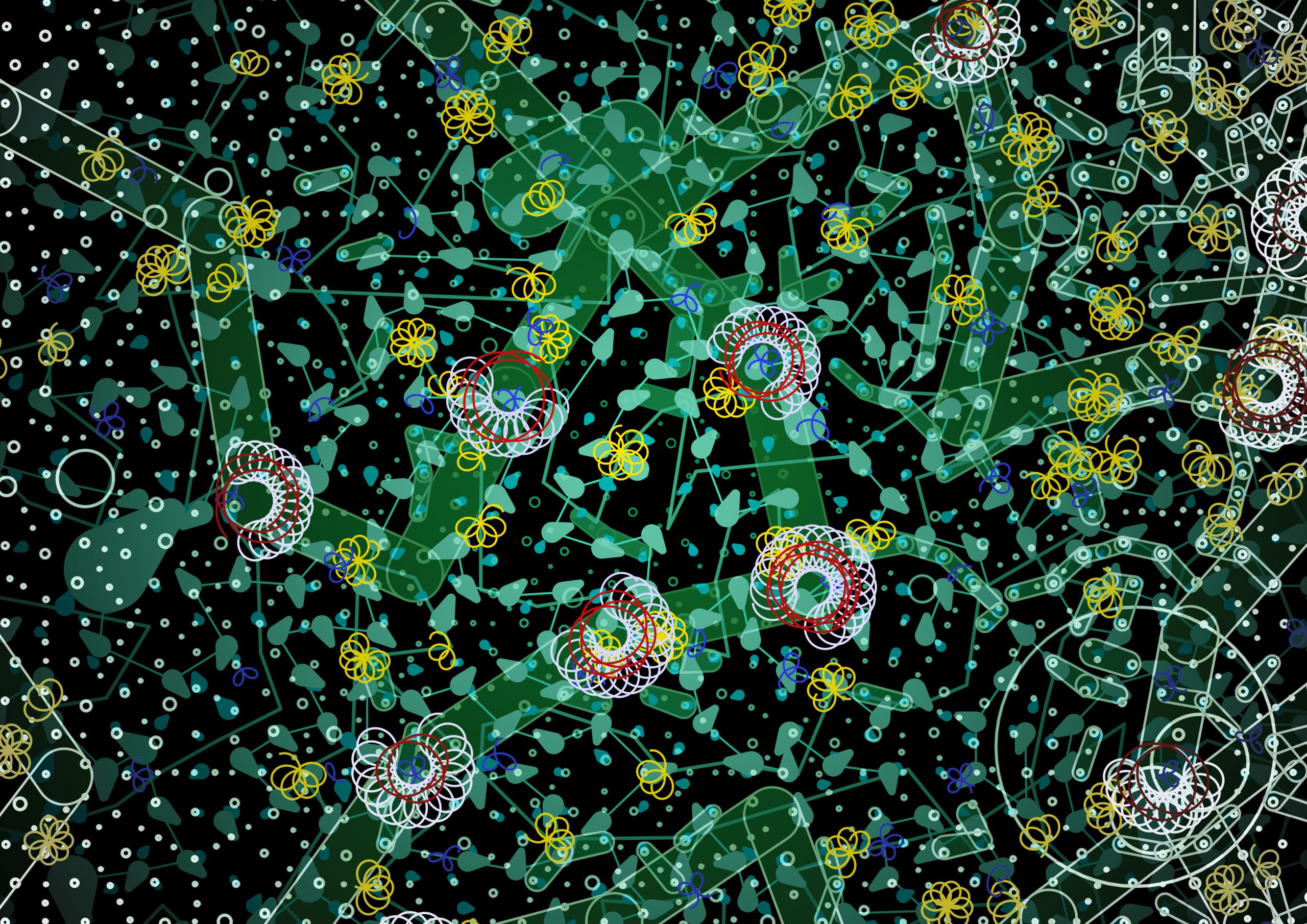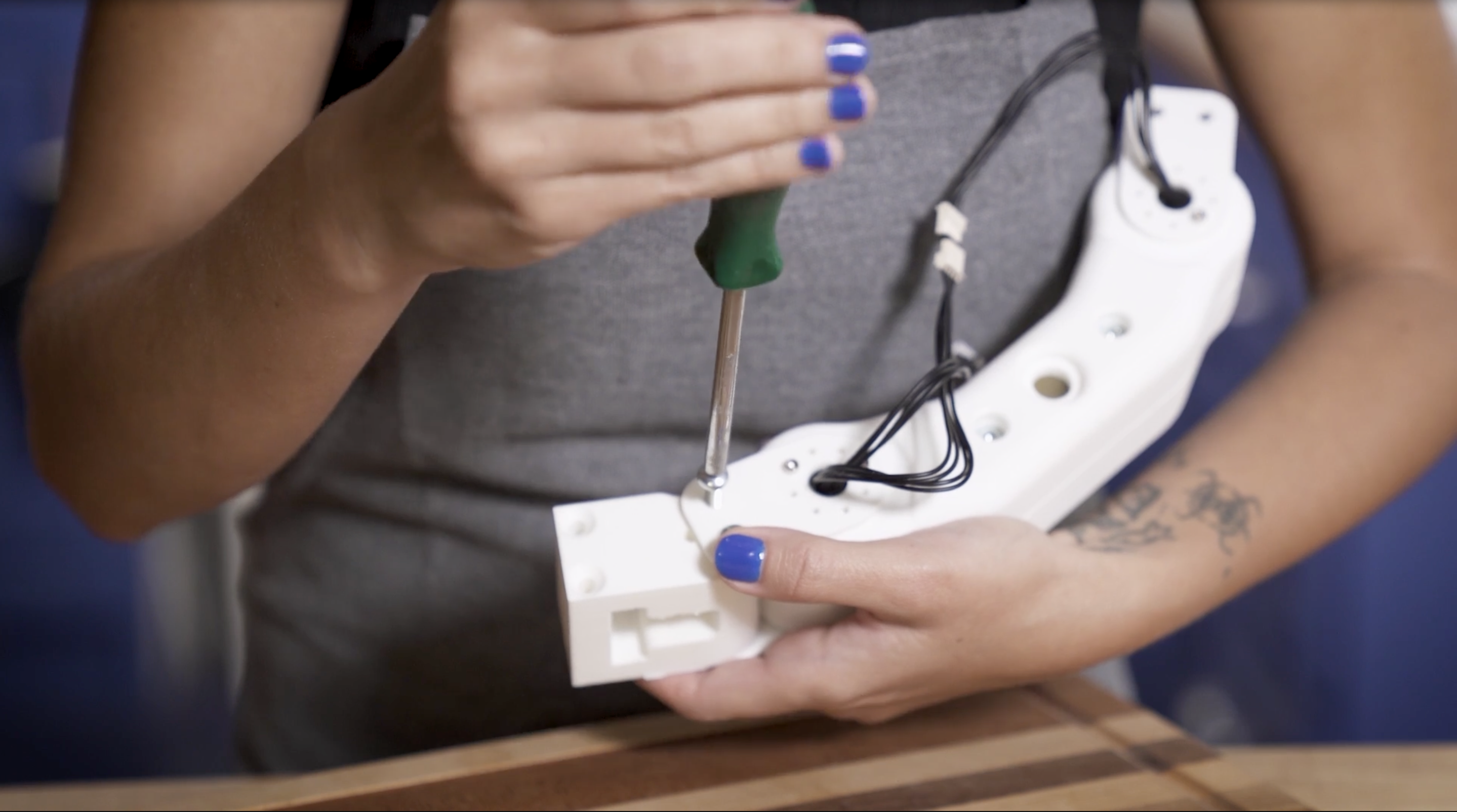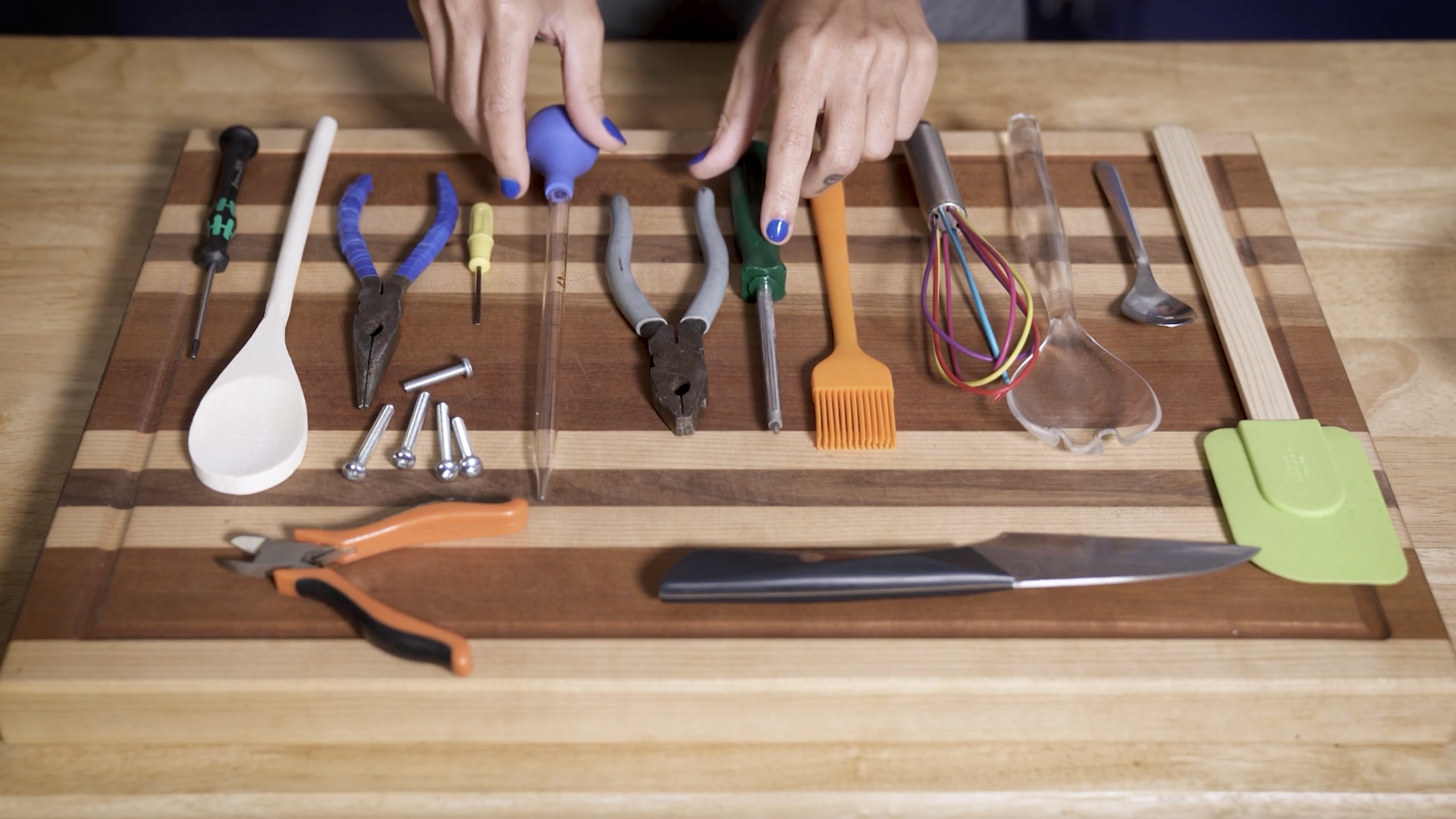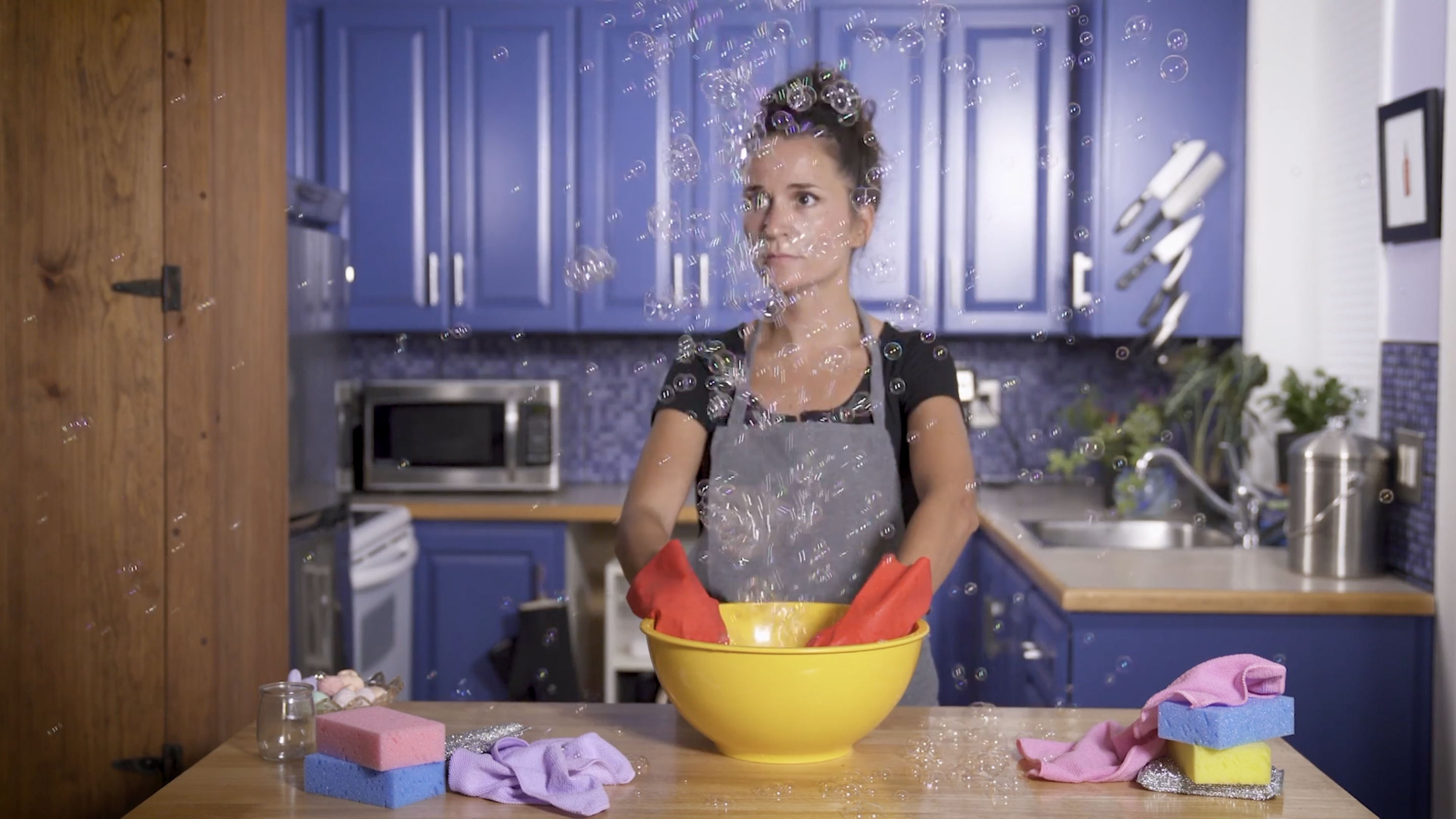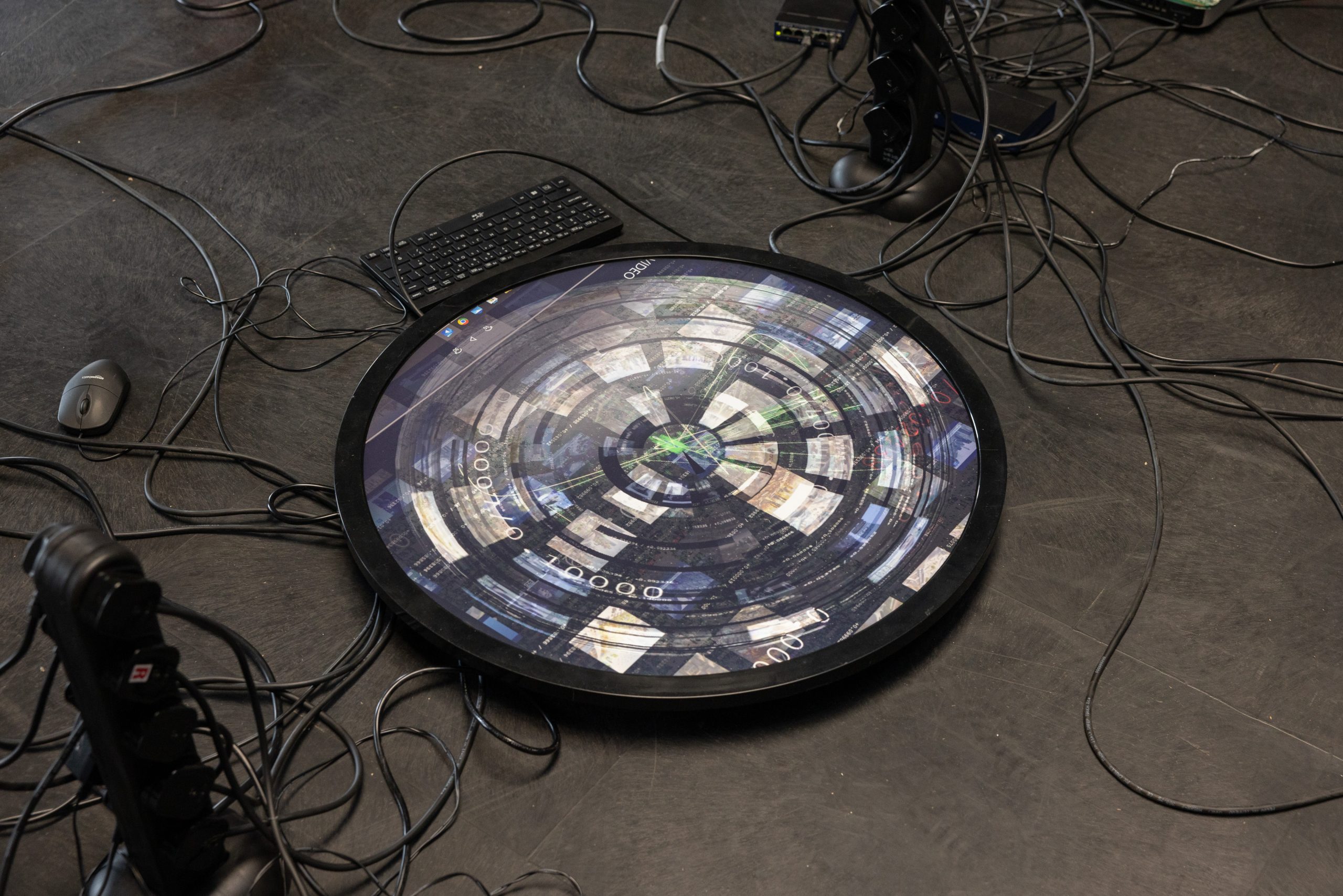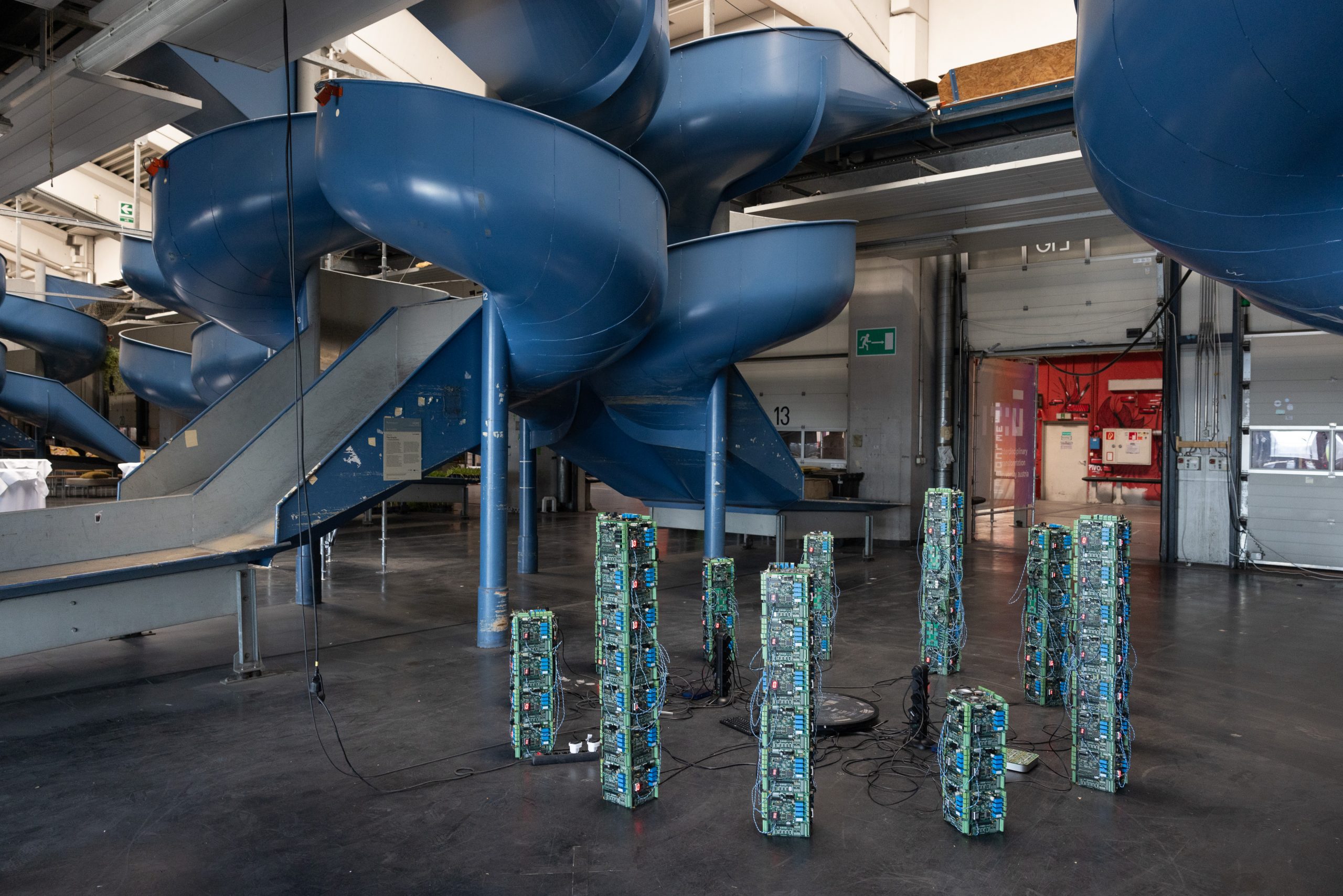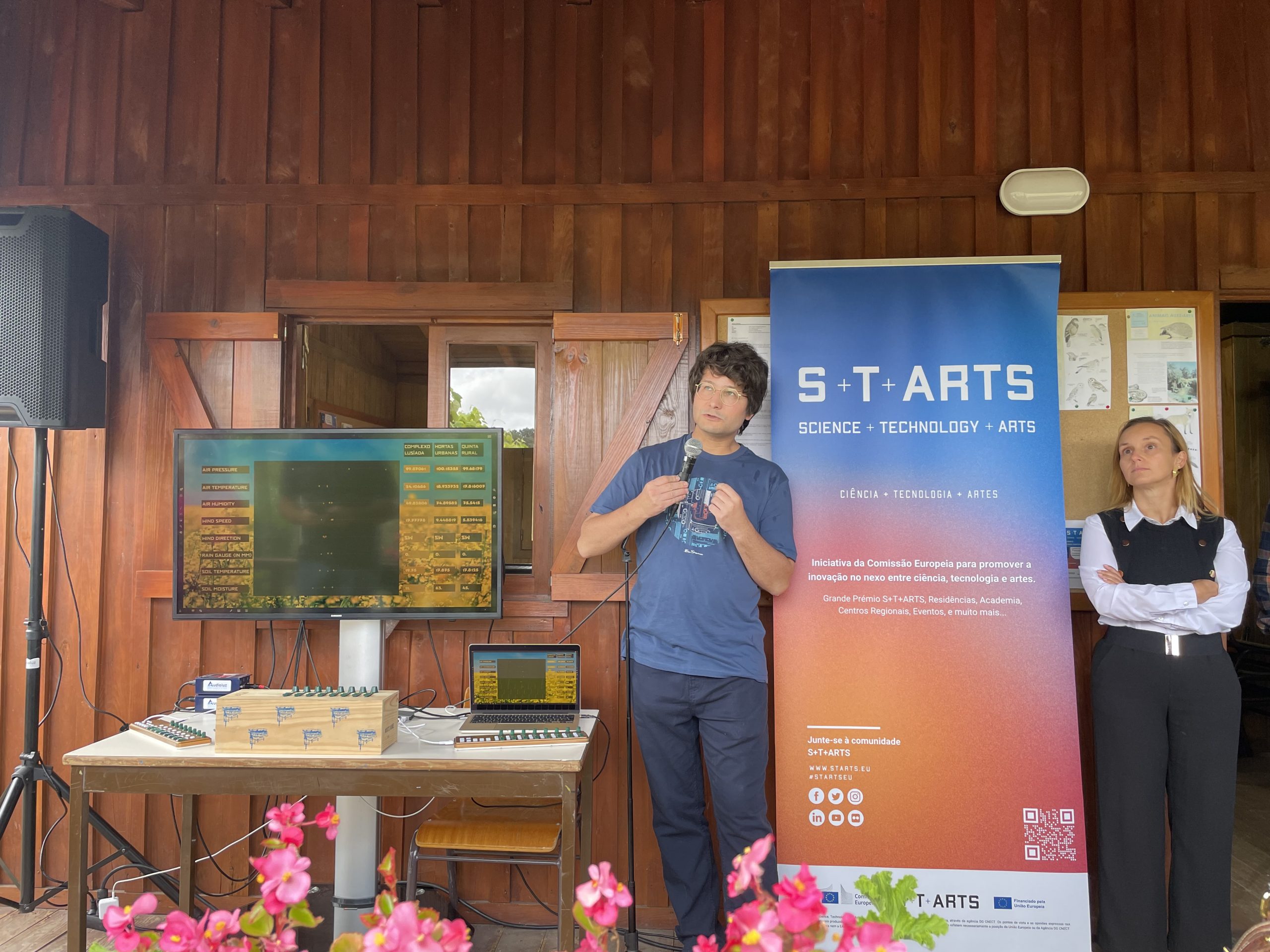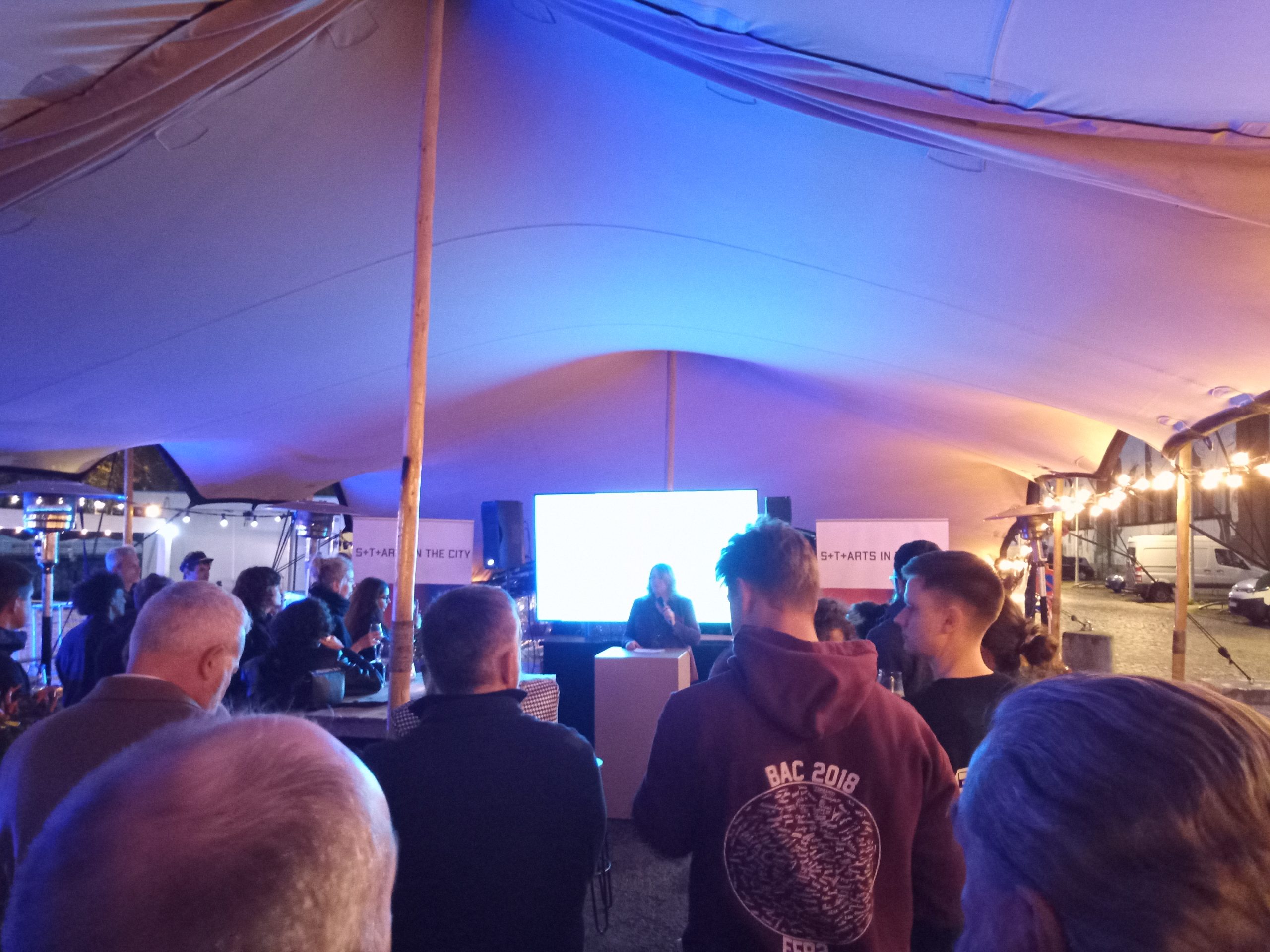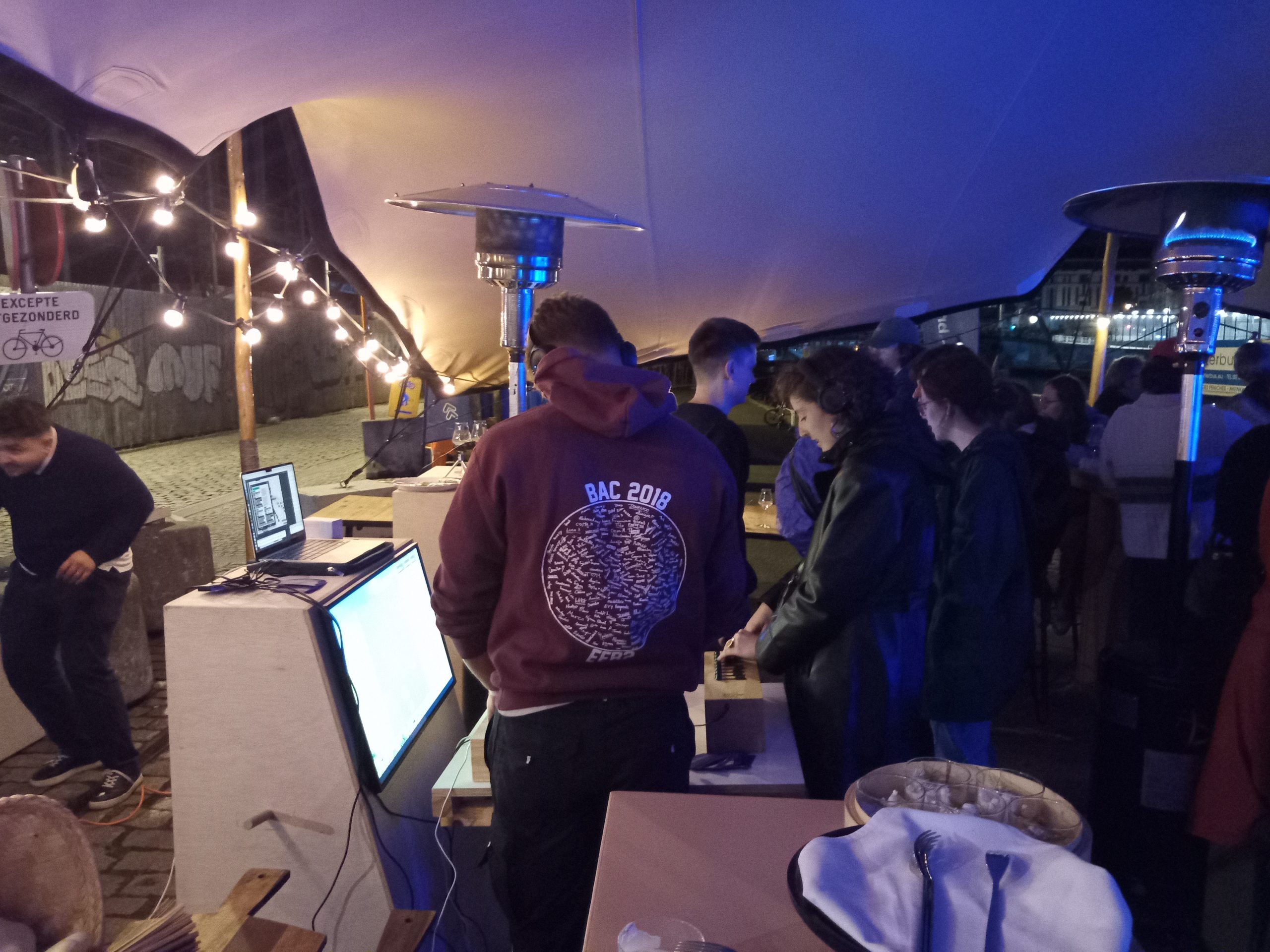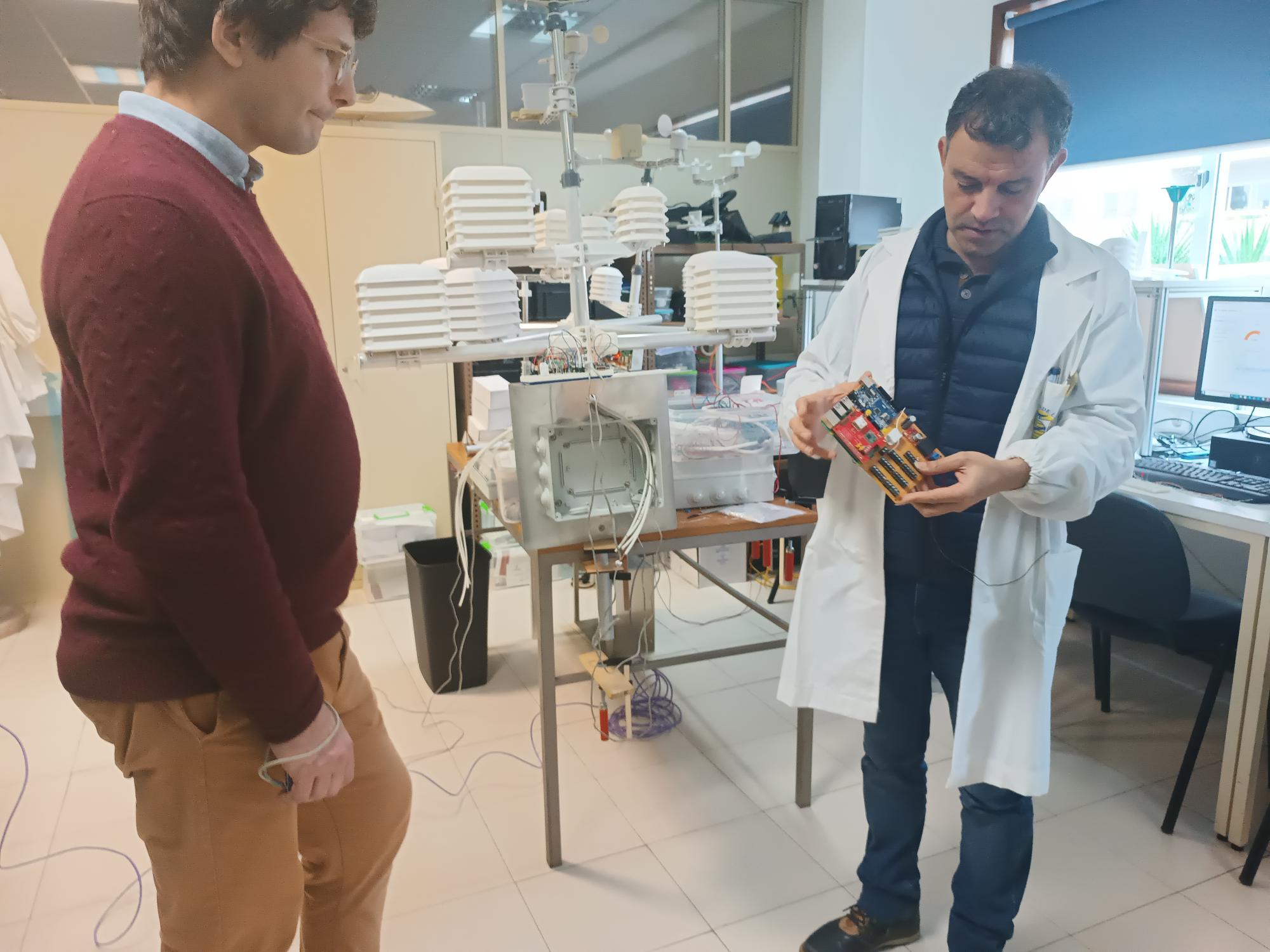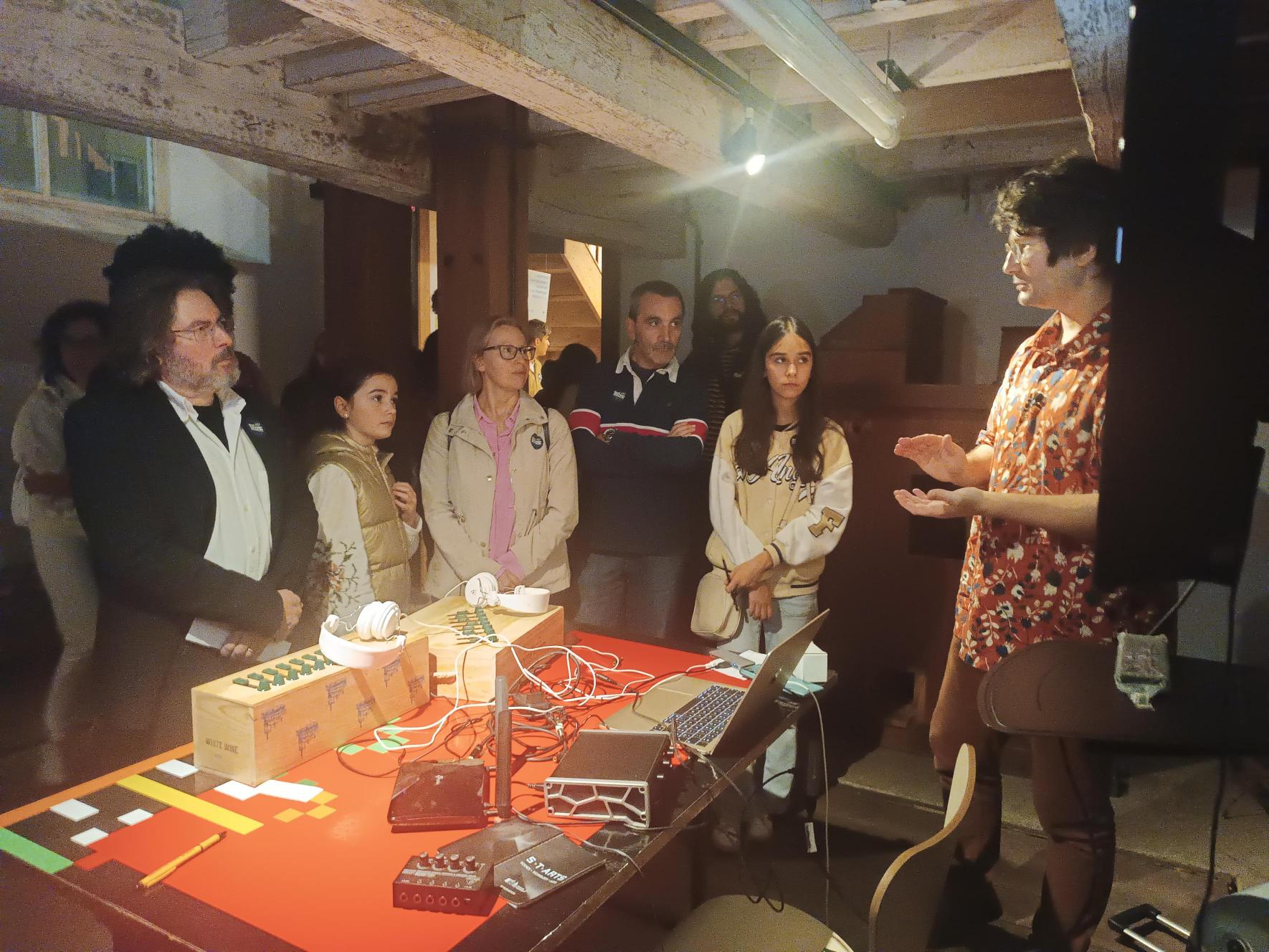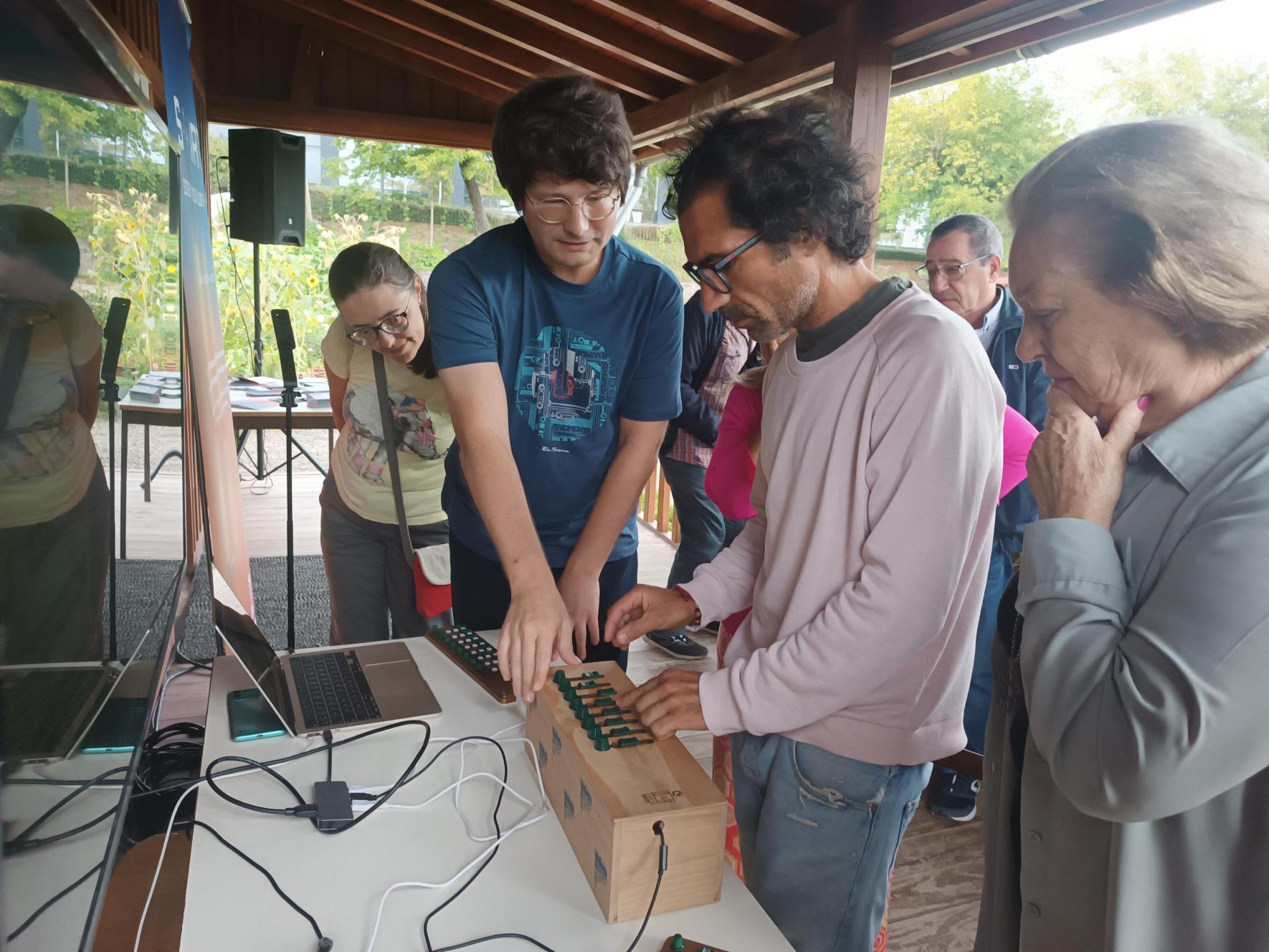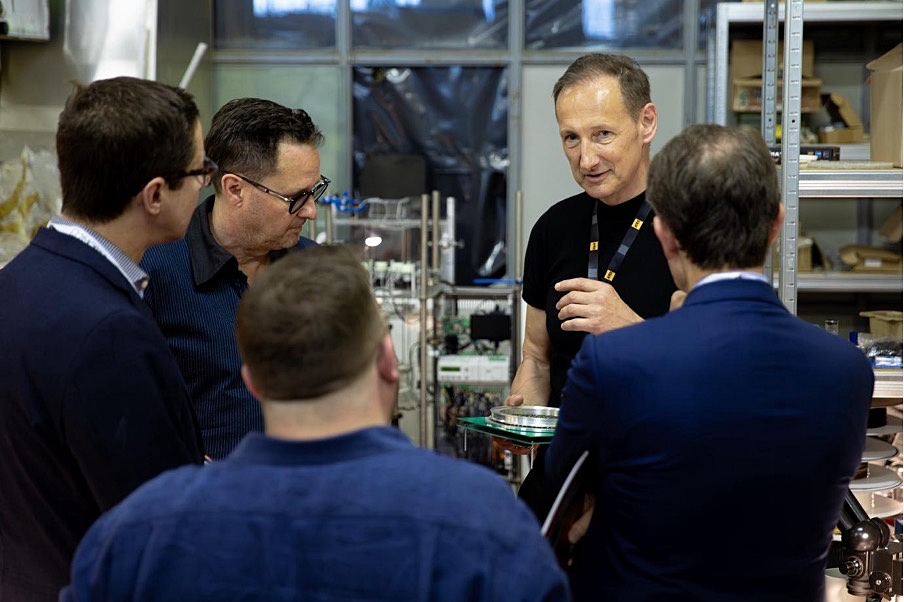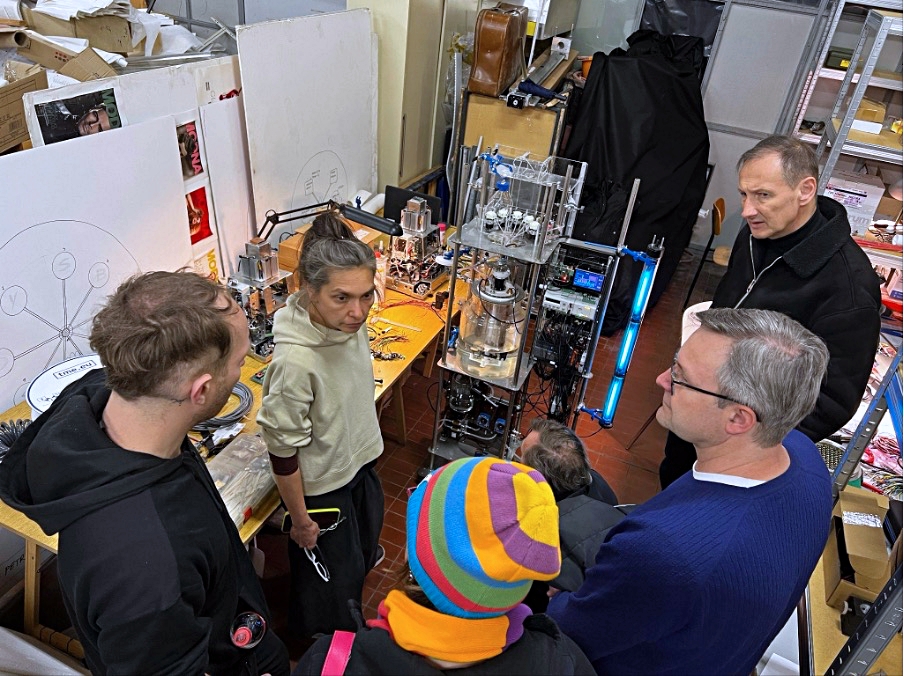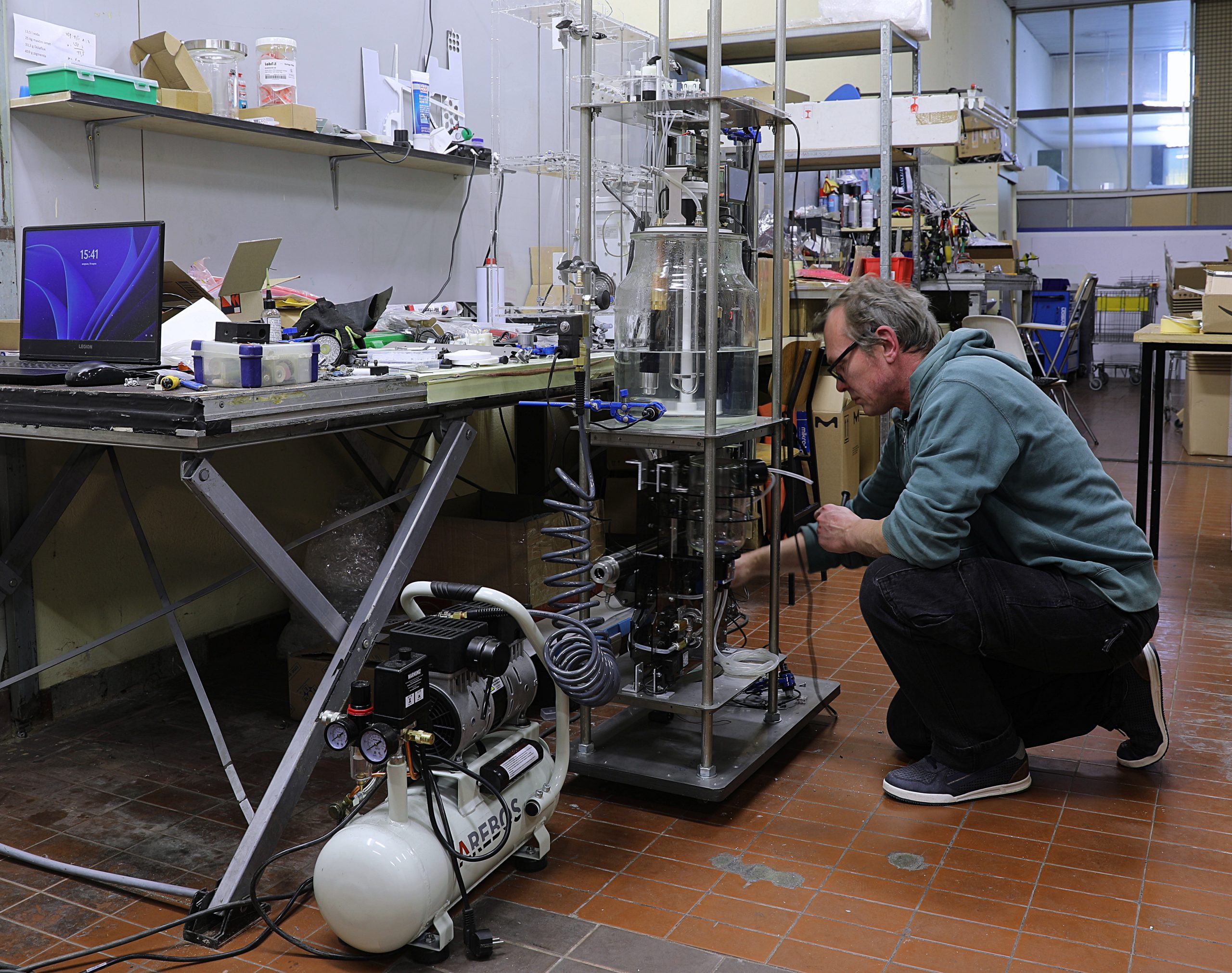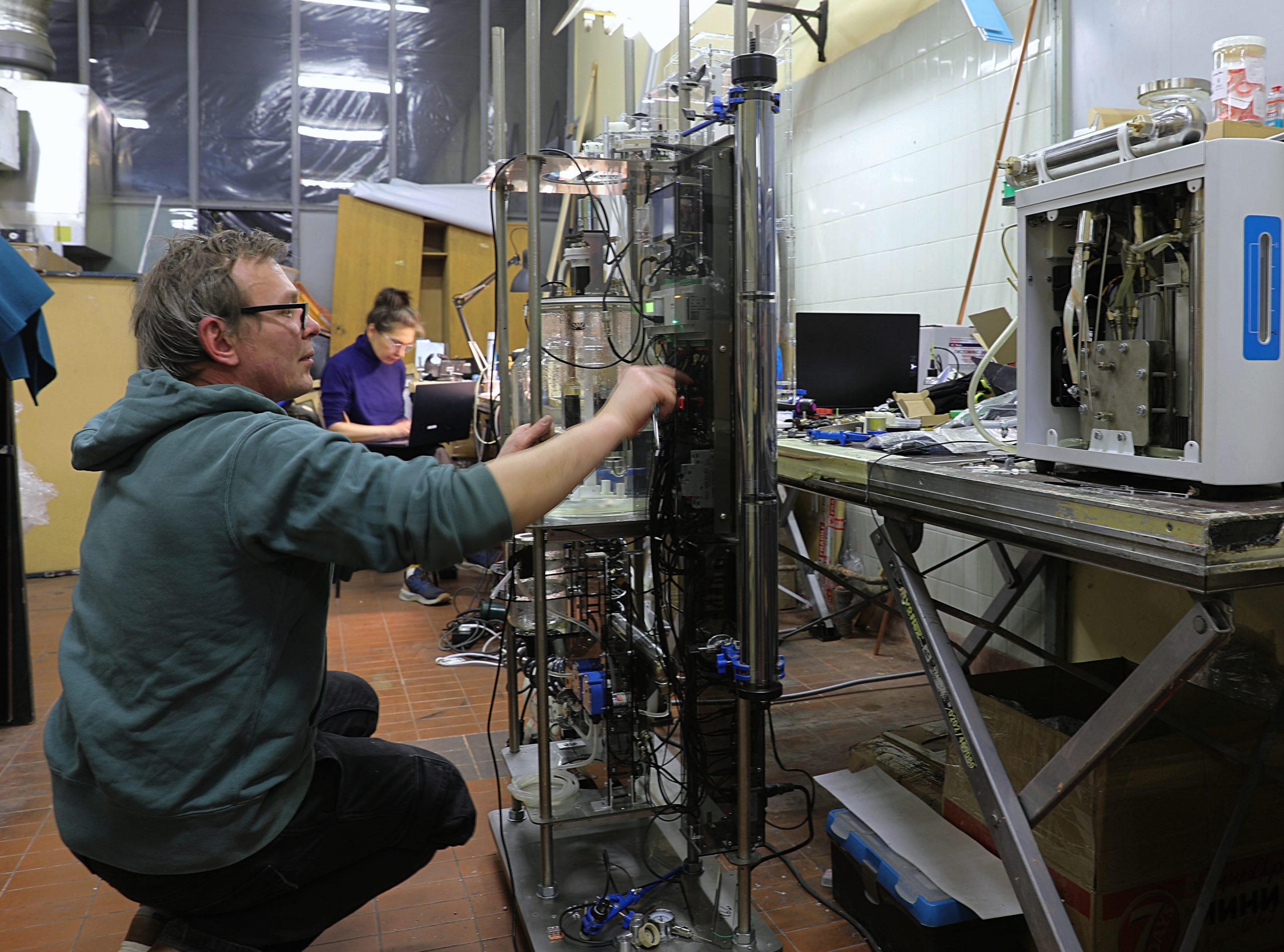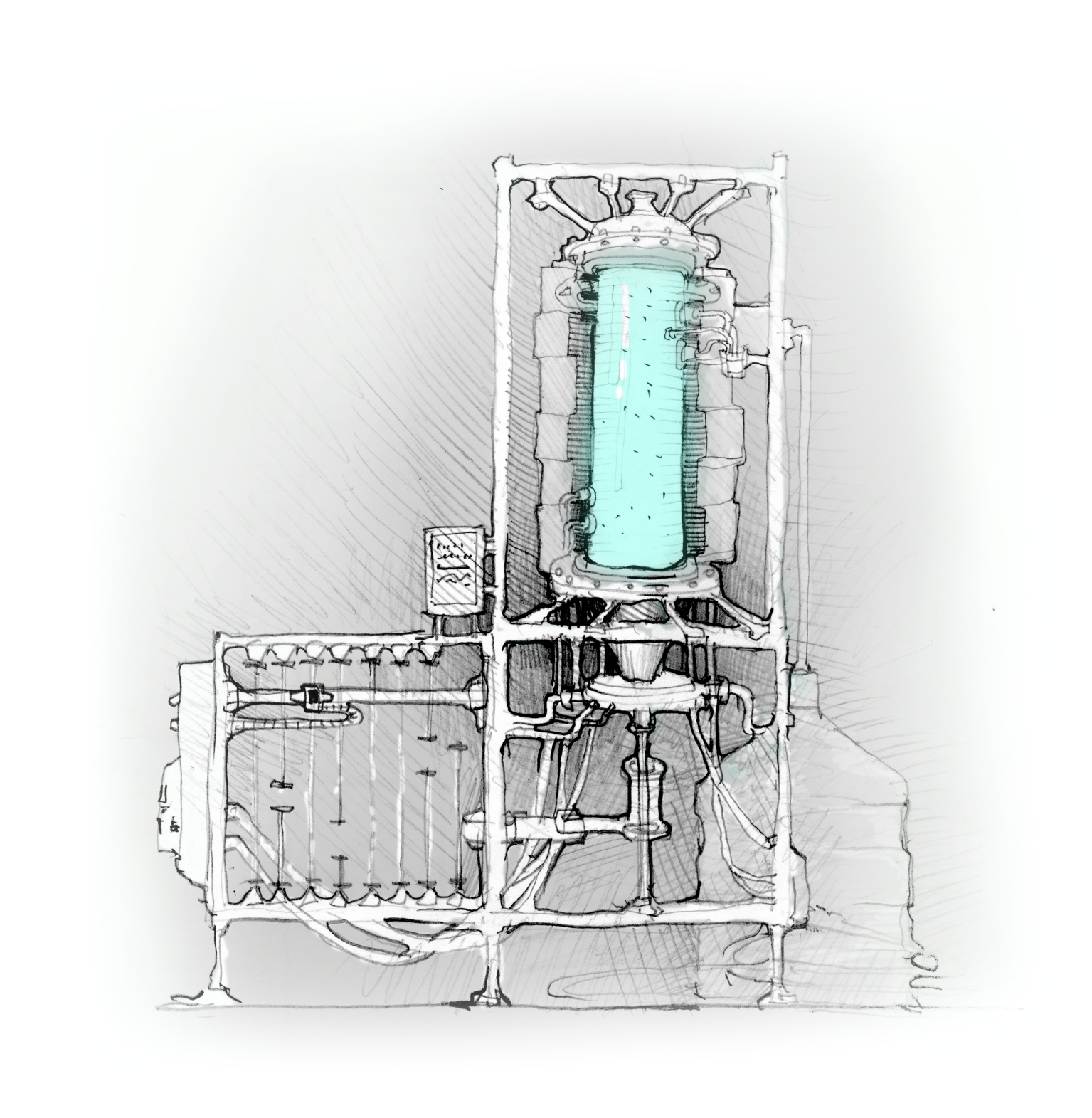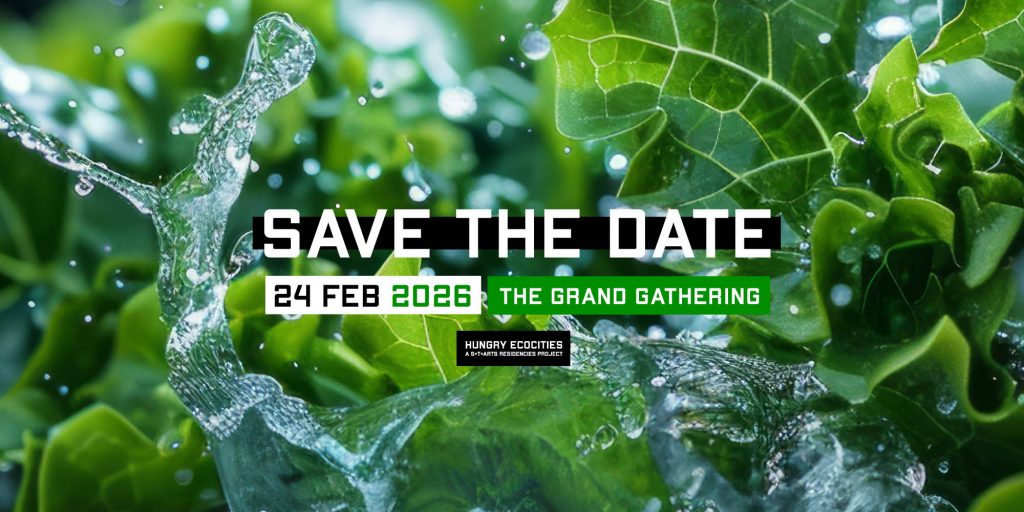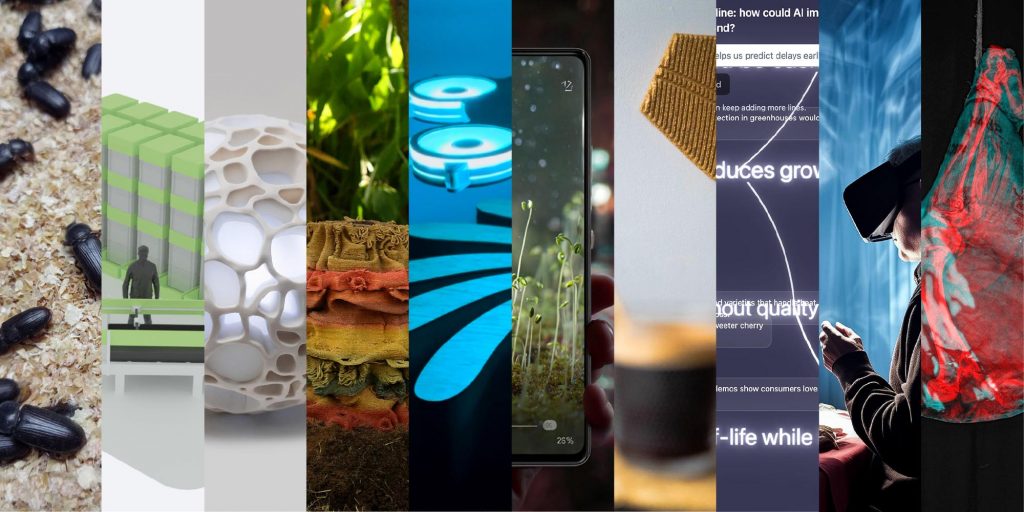S+T+ARTS in the City Residencies’ Outcomes
S+T+ARTS in the City was a S+T+ARTS residencies programme 2023-2024 that invited the artists to address the challenges that European regions face today. The programme aimed to produce artworks that combine art and technology in a creative and functional way, and offered solutions to real-life problems in various sectors, such as green manufacturing, sustainable urban development, security, recyclable textiles, digital literacy, and more.
The winners of the open call were carefully selected from 166 applications from 35 countries. S+T+ARTS In the City supported 11 artists through 5 Regional S+T+ARTS Centers’programme that included a 9-month residency, as well as multiple exhibitions and events during the residency period and thereafter.
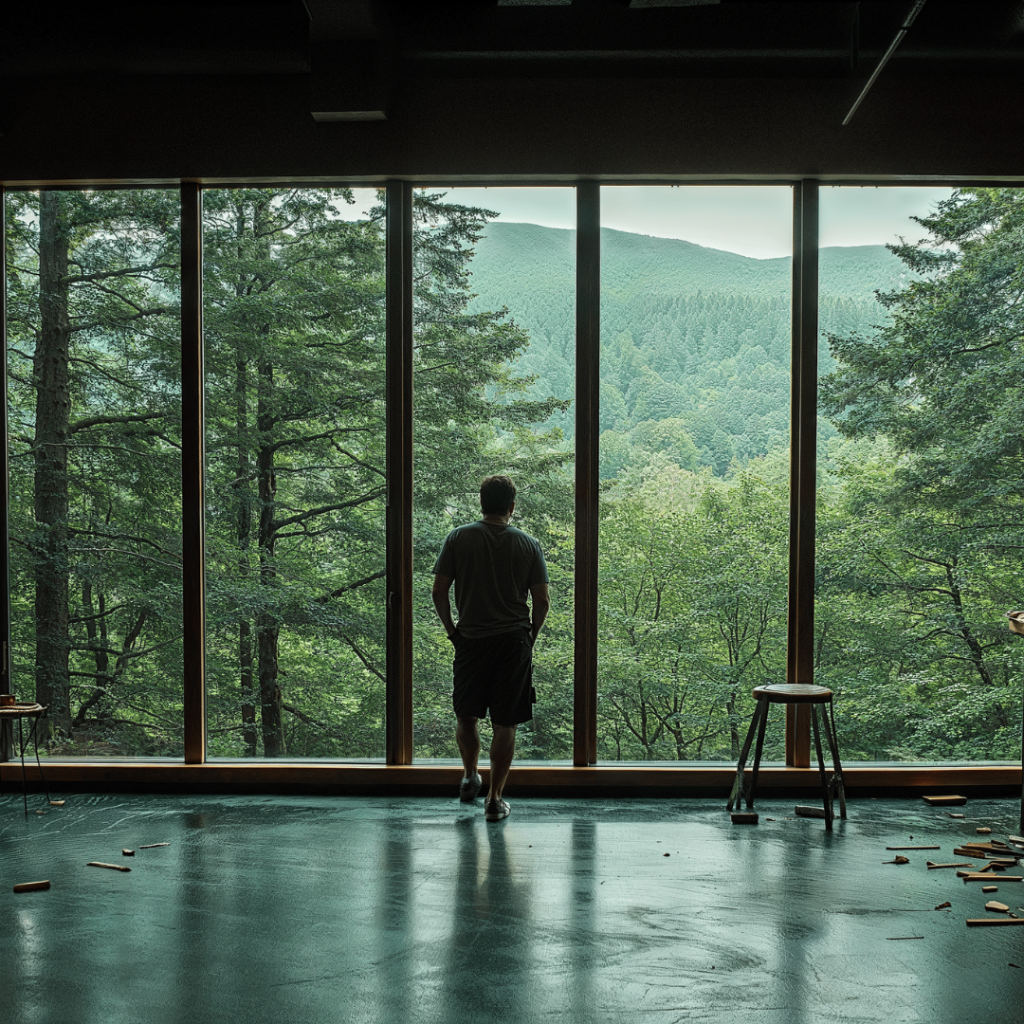
David Claerbout
The Wood Carver and The Forest
Challenge: Reclaiming Our Agency
hosted by GLUON (BE)
More Info
During a residency at Gluon, David Claerbout engaged with experts from the worlds of AI and neuroscience to understand the impact of generative AI on his artistic practice. During his residency, he explored the relationship between AI and how our brain works.
Central to Claerbout’s two new films (in progress), “The Wood Carver and The Forest” and “The Forest and The Wood”, is the question: ‘Does AI only embody the left brain with its language skills, without intuition or sensory experience? Or can AI also reach further and really create something new?’.
In The Wood Carver and The Forest, filmed material is ‘coloured in’ using AI and CGI (computer generated imagery). Here, the artist uses AI as a consultant on mood creation. For The Forest and The Wood, Claerbout starts from AI-inspired set proposals, landscapes inspired by 500 years of landscape painting.
His conclusions are diverse: although a somewhat blind adviser, AI quickly understands what the artist is looking for. At the same time, the AI-generated images are full of errors that you have to correct as a cinematographer. David Claerbout presented his findings in the AI, Humanity & The Arts symposium organised by GLUON on 19 November 2024 in Brussels. The final film will premiere in 2026 at Kasteel Van Gaasbeek in Belgium.
“David Claerbout’s proposal builds upon the latest developments in AI: the large models that suddenly catapulted the strength of AI to an unexpected level, both in working with language, images and sounds. For us, the strength of this proposal lies in the process, the journey, that the artist wants to embark on, from language prompts to images and the failures or weirdness that he seems to expect along the way.” — Hans Bart Van Impe, Proximus Art Collection
+ Artist
David Claerbout (b. 1969) is an internationally acclaimed artist working in the realm of new media art. Having created his first videos in the mid-1990s, his artistic practice has transitioned since the early 2000s into synthetic image-making situated at the intersection of photography, film, and digital art. Claerbout has been the subject of numerous solo exhibitions internationally, including: Centre Pompidou, Paris, France (2007); Kunstmuseum, St. Gallen, Switzerland (2008); De Pont Museum of Contemporary Art, Tilburg, The Netherlands (2016); SFMOMA, San Francisco; WIELS, Brussels, Belgium (2011); Secession, Vienna, Austria; Nederlands Fotomuseum, Rotterdam (2014); Marabouparken Konsthall, Sundbybert, Sweden (2015); KINDL, Berlin (2016); Städel Museum, Frankfurt (2016); MNAC, Barcelona (2017); Schaulager, Basel (2017); Kunsthaus Bregenz (2018); Kunst Museum Winterthur (2020); and Galerie Rudolfinum, Prague (2020), Taipei Fine Arts Museum (2023).
+ Credits
Artist: Studio David Claerbout
Scientific collaborators: Beatrice De Gelder and Kasper Jordaens
Commissioned by GLUON within the framework of S+T+ARTS In the City with the support of Innoviris, National Lottery, Proximus and the Brussels-Capital Region.
A special thanks to our Local Expert Group: Hans-Bart Van Impe (Proximus Art Collection), Arjon Dunnewind (Impakt), Kasper Jordaens (LUCA School of Arts), Annelore Brantegem and Stefaan Sonck Thiebaut (Innoviris).
This project has been developed in the context of the S+T+ARTS in the City project. S+T+ARTS in the City has received funding from the European Commission’s Directorate-General for Communications Networks, Content and Technology under grant agreement No. LC-01984766.

DISNOVATION.ORG
THE SOLAR SHARE: An Edible Solar Currency
Challenge: Understanding and Engineering Photosynthesis for a More Sustainable Future
hosted by Hac Te (ES)
More Info
Sustainability is the goal, but what does it really mean?
The Solar Share: An Edible Solar Currency project challenges prevailing economic models with insights from sunlight-harvesting organisms, crucial to the metabolism of life on Earth. Staged as a one-square-metre microalgae bioreactor, the artwork foregrounds human energy dependence on photosynthesis and proposes harvested edible microalgae as a radical economic unit: The Solar Share. This unit is the biomass produced on one square metre of the Earth’s surface that day. This edible algae unit is a photosynthetic proof of work that can be consumed, exchanged, or stored as a currency.
The Solar Share is an invitation to experience firsthand a transformative economic model that reintegrates human metabolism and energy needs with the actual new energy entering the Earth system as photosynthesis. The Solar Share: An Edible Solar Currency provocatively recenters Earth’s metabolism in economics, redefining sustainability within planetary limits.
“In addition to its scientific basis and its good artistic resolution, the project has a great capacity to raise awareness.” – Tere Badia
+ Artist
DISNOVATION.ORG is a research collective set up in Paris in 2012, whose core members include Maria Roszkowska (PL), Nicolas Maigret (FR), and Baruch Gottlieb (CA/DE).
DISNOVATION.ORG merges contemporary art, research & hacking to critically translate complex socio-ecological debates into operative and provocative exhibits. They create radical artworks staged as large lab experiments focused on energy, ecology, and economics that work as catalysts for staging futures that diverge from prevailing narratives. Their shows, books, and videos permeated global cultural landscapes fostering a critical dialogue at the nexus of artistic, political, and scientific inquiry.
+ Video Statement
+ Credits
Conception & realisation: DISNOVATION.ORG
Co-design: Katharina Ammann
Project assistants: Romain Theron, Léo Lima
Co-production: IFT Paris, Xcenter Nova Gorica, ART2M, and More-Than-Planet
The Solar Share was produced with the support of the S+T+ARTS program of the European Union, and co-commissioned by HacTe. It was inspired by the challenge «Understanding and engineering photosynthesis for a more sustainable future», launched by the Institute of Photonic Sciences (ICFO), and by the conversations held with the Photon Harvesting in Plants and Biomolecules research group (ICFO) during the research phase of the project.
This project has been developed in the context of the S+T+ARTS in the City project. S+T+ARTS in the City has received funding from the European Commission’s Directorate-General for Communications Networks, Content and Technology under grant agreement No. LC-01984766.
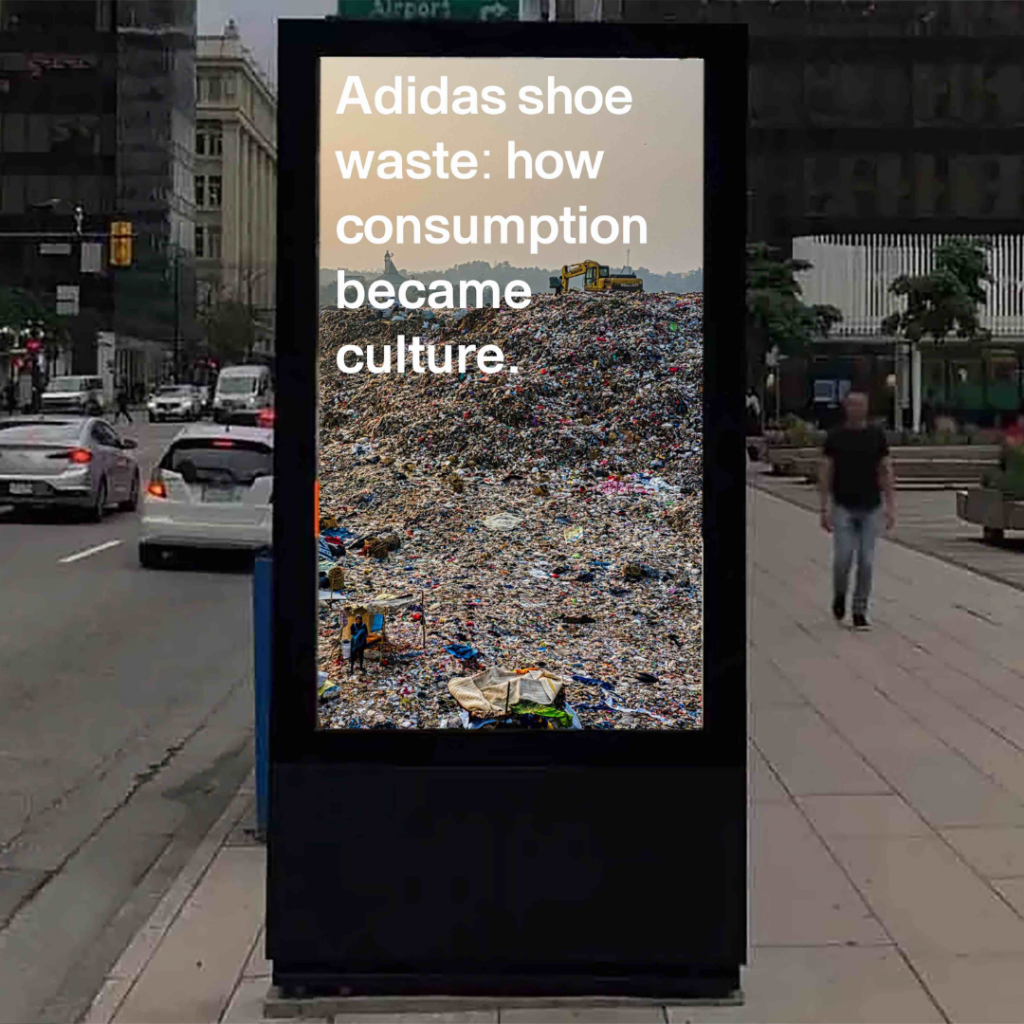
Mark Farid
Invisible Voice
Challenge: Immersive and Digital Naratives for Climate Change
hosted by Hac Te (ES)
More Info
Invisible Voice is a digital arts and research project featuring a free browser extension, mobile app, and art installation that aims to reshape societal narratives and unite individuals around shared causes like environmental impacts, human rights, and corporate accountability.
Launching in early 2025, Invisible Voice’s desktop/mobile extension and app empower you with factual and unbiased information about the businesses behind the companies you use. Using data from 37 open-access datasets, it offers scores on political bias, lobbying, sustainability, and more, helping users align their activities with their values. The mobile app also scans products, logos, or barcodes to provide detailed information about materials, ingredients, packaging, and company data. Debuting at Ars Electronica 2024 as an advertising totem board, it identifies the brands you are wearing or holding and displays related subvertisements and news. When approached, the screen reveals data along with an interactive map revealing connections to other companies and individuals.
Prioritising privacy, Invisible Voice repurposes online advertising to create meaningful social impact instead of profit, turning data into action and fostering local communities around specific causes.
“This project it is linked to a broader concept of sustainable development, visualises the interests of different companies and proposes a handy app to decipher the complex web of relationships between companies. And it has a good previous development that ensures the achievement of the goals of the project.” – Tere Badia
+ Artist
Mark Farid is an Artist, Researcher, and Lecturer in Fine Art at Central Saint Martins, University of the Arts London. He specializes in the intersection of the virtual and physical world, and the effect new technologies have on the individual and their sense of self. Farid’s work embodies hacker ethics, such as a focus on privacy policies, use of surveillance technologies, and campaigning for data privacy and protection. His work forms a critique of social, legal, and political models.
Graduated from Kingston University, London, with a First Class (Hons) degree in Fine Art (2014) and has since given talks and participated in group and solo exhibitions in England, France, Germany, Spain, Denmark, Finland, Slovenia, UAE, and Japan.
+ Video Statement
+ Credits
Artist: Mark Farid
Lead Developer: Orange
UX & UI: Tom Shearing
Invisible Voice is created by Mark Farid and developed by Orange. It is co-commissioned by HacTe and MediaFutures with support from the University of the Arts London, Universitat Oberta de Catalunya, and GuestRoomMaribor.
This project has been developed in the context of the S+T+ARTS in the City project. S+T+ARTS in the City has received funding from the European Commission’s Directorate-General for Communications Networks, Content and Technology under grant agreement No. LC-01984766.
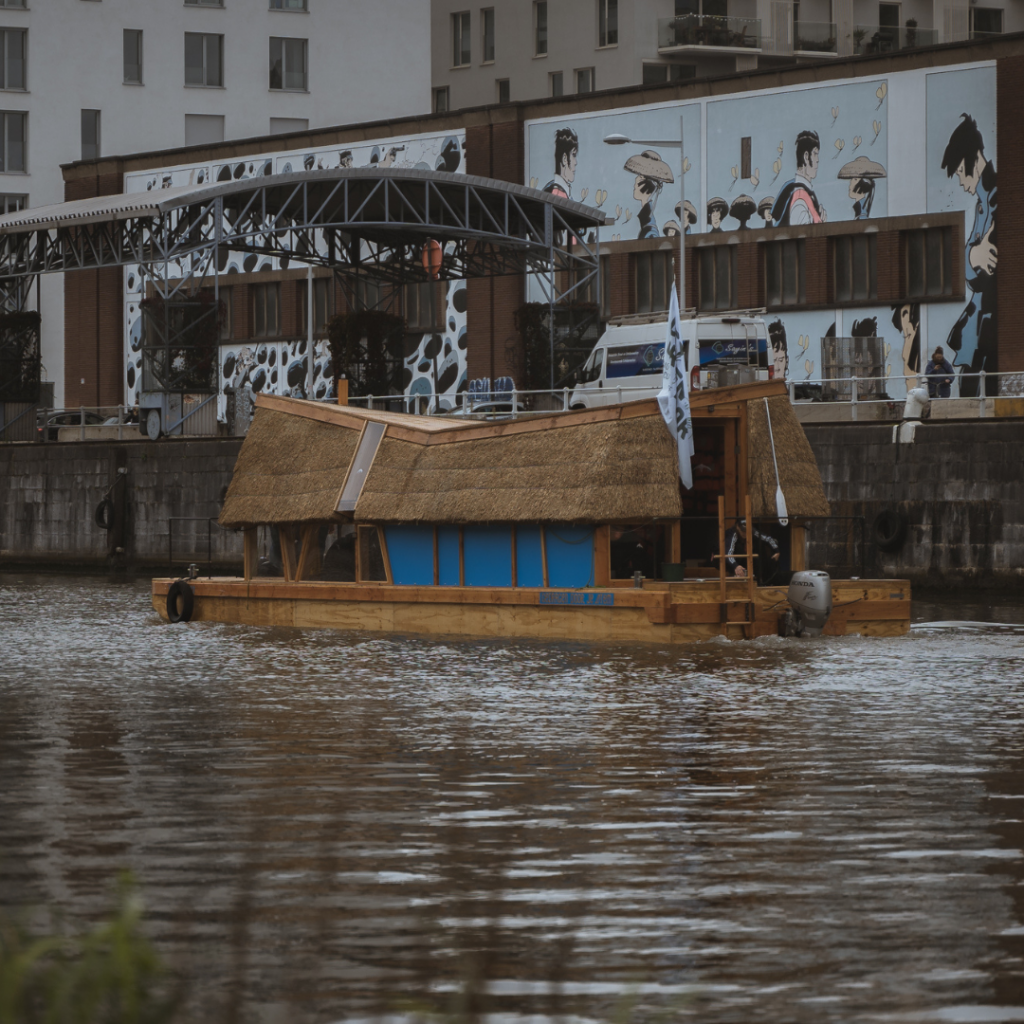
Futurefarmers
In the Belly
Challenge: Where Our Food Comes From
hosted by GLUON (BE)
More Info
In the Belly is an artistic platform and a call to action to reconsider our food systems and the interdependencies that shape them. As a functioning transport vessel which moves food from a network of peasant farmers in Pajottenland* into the belly of the European Capital city of Brussels, it brings small-scale, local farmers into contact with the global flow of goods and foreign trade.
Amidst the already present theater of the canal, a rassemblement of farmers, seeds, artists, soil, the canal, poets, electromagnetic frequencies, solar energy, architects, and techno-disobedients form the scene of a series of actions. Moving upon an unconventional, wooden canal boat in intimate relation, this constellation enables new imaginaries – through a slow, reflective process of repair, resilience and reflection on our habits of agri-cultural production.
In the Belly… it facilitates the transition of local food transport away from diesel trucks to water transport using the already-in-place infrastructure of the Brussels-Charleroi canal. Lead farmer, Tijs Boelens of Degroentelaar farm coordinates food grown by twelve farms to be transported from Halle to Brussels two times per week. Bundles of food are sorted and packed and paraded through the city by bike onto the shelves of cooperative stores and into collective kitchens.
The launching of In The Belly took place in October 2024 in Brussels with a weekend full of public activities (performances, debates, workshops, screenings, etc.) on and next to the boat.
“Futurefarmers aims to connect art and technology departing from a collaborative, community and holistic approach. The imaginary of a sustainable boat, combining addressing logistic challenges with the poetic beauty of a boat floating between Brussels and Pajottenland, is fascinating.”
+ Artist
Futurefarmers is a working group founded in San Francisco in 1995. They are artists, architects, computer programmers, designers, farmers, scientists and anthropologists aligned through a common interest in creating frameworks of participation that facilitate encounter, exchange and tactile forms of inquiry. Their various practices coalesce in many forms – from the far reaching digital realms to the deeply rooted earthly domains. Their temporary public art often evolves into permanent, durable programs which have influence on public policy and city design. Futurefarmers’ work has been exhibited at the Whitney Museum of American Art, New York; the Museum of Modern Art, New York; the Solomon R. Guggenheim, New York; MAXXI | Museo Nazionale delle Arti del XXI Secolo, Rome.
+ Video Statement
+ Credits
Founding Artist constellation:: Futurefarmers (Amy Franceschini & Lode Vranken), Inge Braeckman, Honoré δ’O
Lead farmer: Tijs Boelens
Boat design: Lode Vranken
Boat building: Elias Peeters, Mose Lein, Oscar Van Geertruyden, Jonathan Zwiessler
Website: Futurefarmers, Maëva Borg, Jérémie Nuel
A special thanks to our Local Expert Group: Sandrine Vokaer, Marie-Carmen Bex, Carl Lachat, Julie Lebrun, Lynn Tytgat and Stephan Petermann.
Commissioned by GLUON within the framework of S+T+ARTS In The City
Co-funded by Innoviris, National Lottery and the Brussels-Capital Region
This project has been developed in the context of the S+T+ARTS in the City project. S+T+ARTS in the City has received funding from the European Commission’s Directorate-General for Communications Networks, Content and Technology under grant agreement No. LC-01984766.
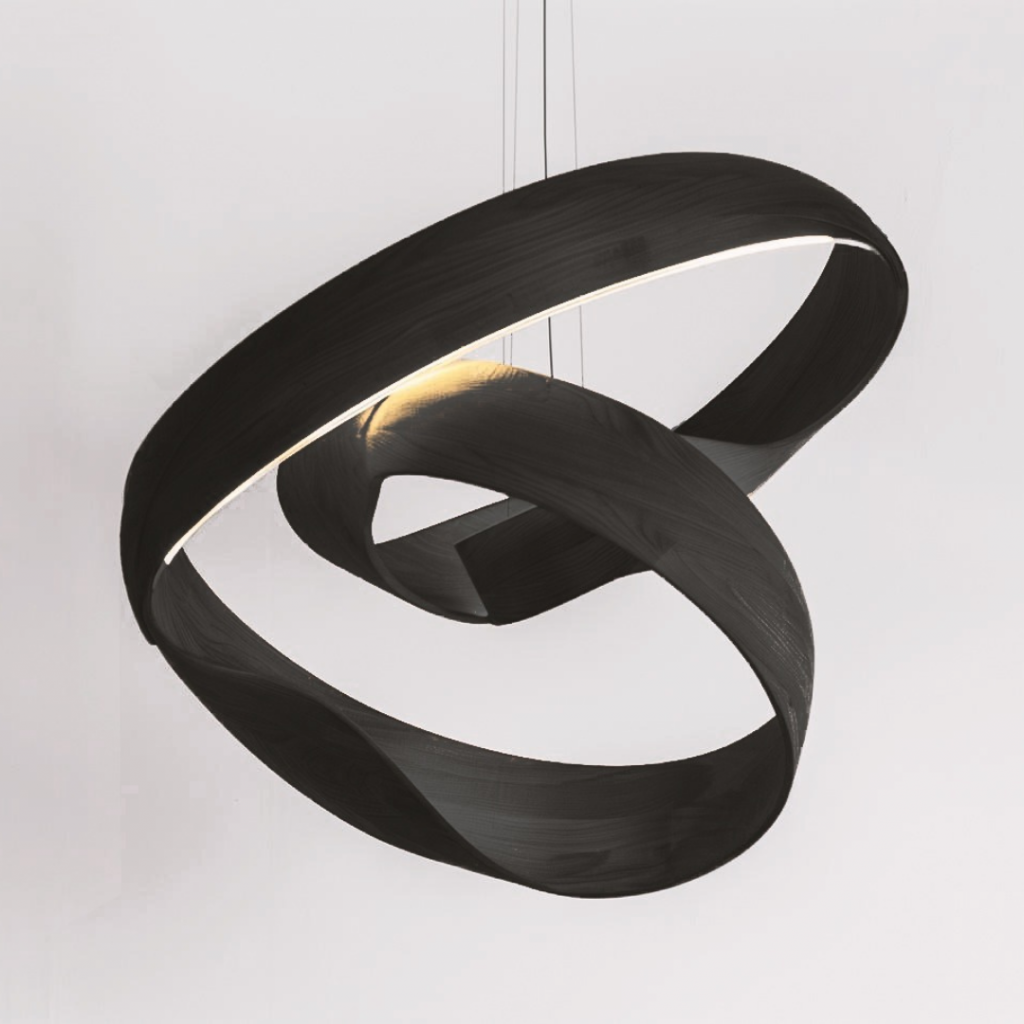
Roel Heremans
Resonance of Renewal
Challenge: The Value of Care
hosted by GLUON (BE)
More Info
Resonance of Renewal is an audiovisual sculpture in the entrance hall of the Jules Bordet Institute. Suspended from the high ceiling, this organic form contrasts distinctly with the hospital’s clean, linear architecture, highlighting the delicate balance between the structured medical environment and the complex, holistic journey of each patient.
While it is difficult to pinpoint an exact number, research indicates that over 250,000 cancer-related studies are published worldwide each year. On average, this means a new scientific study is released every two minutes. To reflect this pace of discovery, a small light ignites at the beginning of the sculpture every two minutes, traveling through its entire form and gradually illuminating it throughout the workday. This ongoing visual process symbolizes the steady progress in cancer research, offering a sincere message of hope and advancement to all who encounter it.
The sculpture’s flowing, organic design, resembling a double Möbius ring, serves as an evocative visual metaphor for the endless cycle of life, interconnectedness, and transformation, mirroring the ongoing process of healing and adaptation.Beyond its aesthetic contribution, Resonance of Renewal invites reflection on the role of data in healthcare. By integrating this data in an encrypted and respectful manner, the sculpture seeks to enhance the connection between patients and the broader advances in medical science, emphasizing the ongoing progress and collective effort in cancer research.
“The synergy between the artist, the hospital, and researchers will lead to a multilayered artwork that will speak to many people. We really appreciated the hopeful message that was the core of the proposal.”
+ Artist
Roel Heremans (1990, lives and works between Brussels and Stockholm) is a transdisciplinary artist examining the interplay of art, ethics, and technology, particularly within video game culture. He composes sonorous fragments that stimulate visitors’ imaginations and foster engaging experiences. Through multi-layered installations and philosophical works, Heremans encourages participants to connect via sound, introspection, and bio data. His diverse practice, grounded in interactive encounters, also encompasses video and works on paper.
Past works have been shown at Art Dubai, Dubai (AE), Science Gallery, Monterrey (MX), K11 Foundation, Hong Kong (HK), Sónar Festival, Barcelona (ES), Fiber Festival, Amsterdam (NL), Sale Docks, Venice (IT) and Siemens Sanat Gallery, Istanbul (TR) among others.
+ Video Statement
+ Credits
Concept: Roel Heremans
Co-commissioned by Gluon and Institut Jules Bordet within the framework of S+T+ARTS In the City
3D design: Laura Colmenares Guerra, Ferre Vander Elst, Sander Heremans
3D printing: VPP composites, Sirris
Programming: Sirris
Local experts: Maarten Francq, Frederik Timmermans, Laurien Van Dyck, Lucas Evers, Katrien Van Remoortel, Evy Ceuleers
Co-funded by: European Commission, Innoviris, National Lottery, IMEC, Flemish Institute for Biotechnology
This project has been developed in the context of the S+T+ARTS in the City project. S+T+ARTS in the City has received funding from the European Commission’s Directorate-General for Communications Networks, Content and Technology under grant agreement No. LC-01984766.
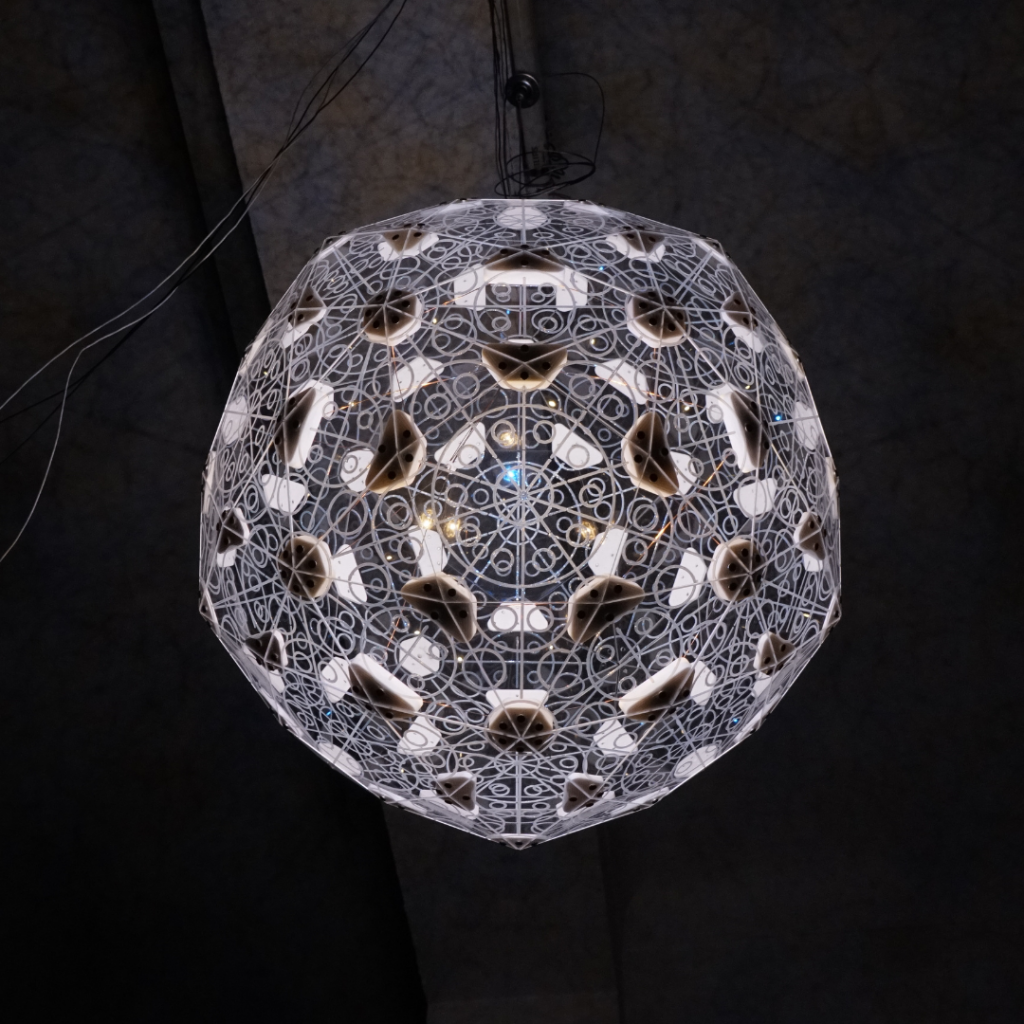
Adrien Lucca
Parallel Worlds
Challenge: Going Wild in the City
hosted by GLUON (BE)
More Info
In the burgeoning field of transdisciplinary studies, particularly at the intersection of arts, technology and environmental science, the issue of light pollution represents a critical challenge for urban ecosystems. This project examines the impact of artificial lightning, specifically LEDs, on the colour rendition of natural objects, such as flowers and plants, and how these light sources affect nocturnal wildlife.
During his residency at GLUON, Adrien Lucca explored how the spectrum of artificial lights, designed primarily around human visual characteristics, potentially degrades visual experiences for other species, taking the hawkmoth – an insect known to pollinate at night and to have an extremely performant colour vision at night – as an exemplary case. This inquiry culminated in the development of a large-scale spherical light sculpture that does not disturb the visual system of the hawkmoth and at the same time illuminates its surroundings for humans. This light installation serves as a prototype for the development of new urban light schemes.
“This proposal very nicely makes the link between Adrien’s own developed LED technology and its application in art. The philosophical narrative behind the objectives is very relevant and will hopefully induce critical reflections with the spectator.”
+ Artist
Since 2009, Adrien Lucca develops a multidisciplinary body of work around color and light that questions our perception of the physical world. In search of practical means of action to set up aesthetic experiences, he has set up a research and production laboratory where he conceives his works in an autonomous way at the intersection of art and science. To the antipodes of a sad passion for the normalization and the technicization of our relations to the physical world, Lucca believes that one can highlight the strangeness of the link between the physical world and our perception of it by appropriating scientific and technological ressources. His most recent work aims at redefining the very concept of “color”. Adrien Lucca (born in 1983 in Paris) lives and works in Brussels, Belgium.
+ Video Statement
+ Credits
Concept and production: Adrien Lucca
Commissioned by GLUON within the framework of S+T+ARTS In the City with the support of Innoviris, National Lottery and the Brussels-Capital Region.
A special thanks to our Local Expert Group: Bas Van Heur (VUB Brussels), Thomas Merckx (VUB brussels), Elenea Sorokina, Karol De Decker (National Lottery) and Kourosch Abbaspour Tehrani (Innoviris).
This project has been developed in the context of the S+T+ARTS in the City project. S+T+ARTS in the City has received funding from the European Commission’s Directorate-General for Communications Networks, Content and Technology under grant agreement No. LC-01984766.
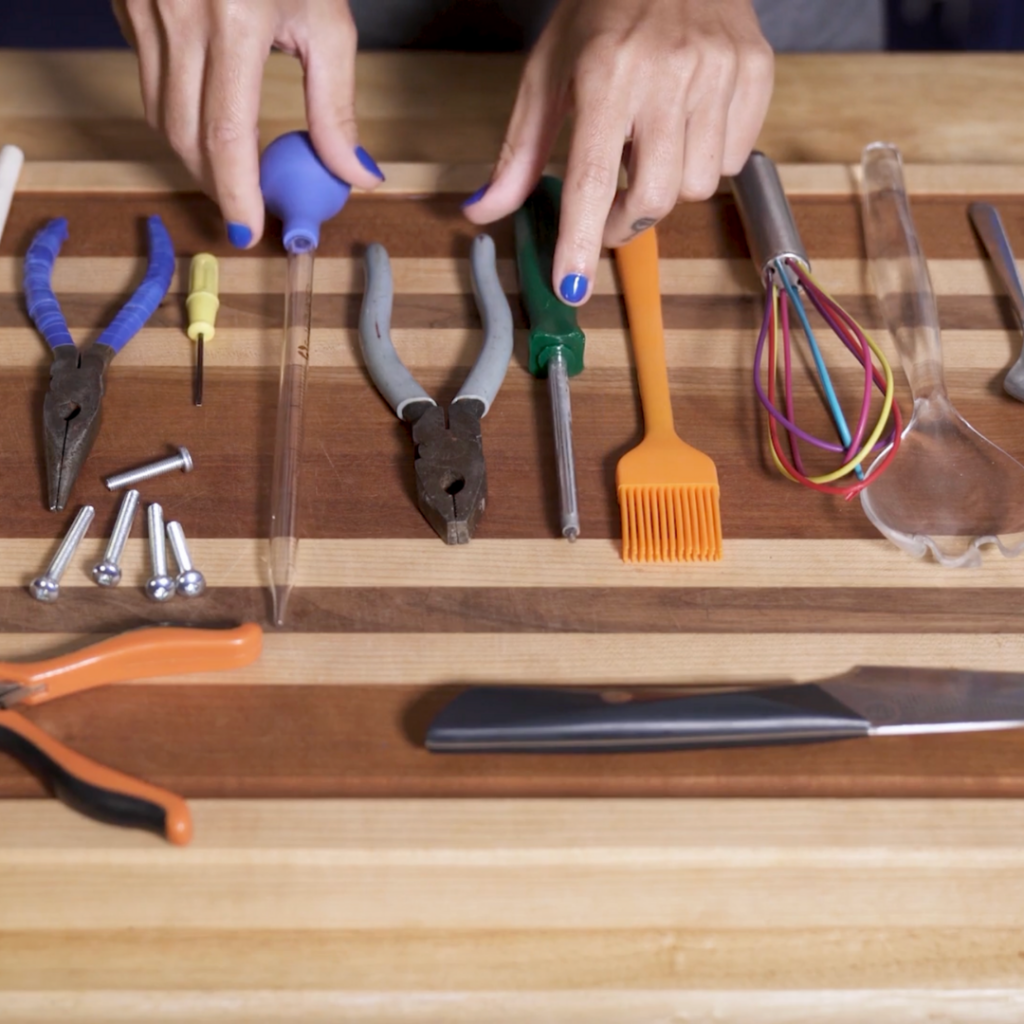
Mónica Rikić
Somoure
Challenge: Designing the Robots of the Future
hosted by Hac Te (ES)
More Info
“Her project is extremely well developed and organised. It is consistent with the challenge proposed. She has a grounded experience in the field.” – Tere Badia
+ Artist
Mónica Rikić’s artistic practice lies in the development of alternative technologies through creative coding and electronics. Her proposals merge technology and philosophy in an artistic manner, creating technological artefacts that are less concerned with functionality and productivity, and more concerned with triggering collective thinking and discussion. Formally, her practice is based in producing handmade electronics objects and robots, which perform different concepts within the scope of her research, presenting themselves as theatrical devices. With these devices, she offers experiences that propose alternative ways of thinking about technologies, robotics and open hardware. Her works illustrate how artistic research is a valid way to not only contribute to, but also critically evaluate the advancement of techno-scientific knowledge, providing new perspectives and generating previously-unknown paths of exploration.
+ Video Statement
+ Credits
Concept and technical development: Mónica Rikić
In collaboration with: Institut de Robòtica i Informàtica Industrial CSIC-UPC
Filmmaking: Agustina IsidoriMusic: Rodolfo Venegas
Somoure was co-commissioned by HacTe with the support and collaboration of the Institut de Robòtica i Informàtica Industrial (IRI) – CSIC-UPC, and the S+T+ARTS program of the European Union.
This project has been developed in the context of the S+T+ARTS in the City project. S+T+ARTS in the City has received funding from the European Commission’s Directorate-General for Communications Networks, Content and Technology under grant agreement No. LC-01984766.
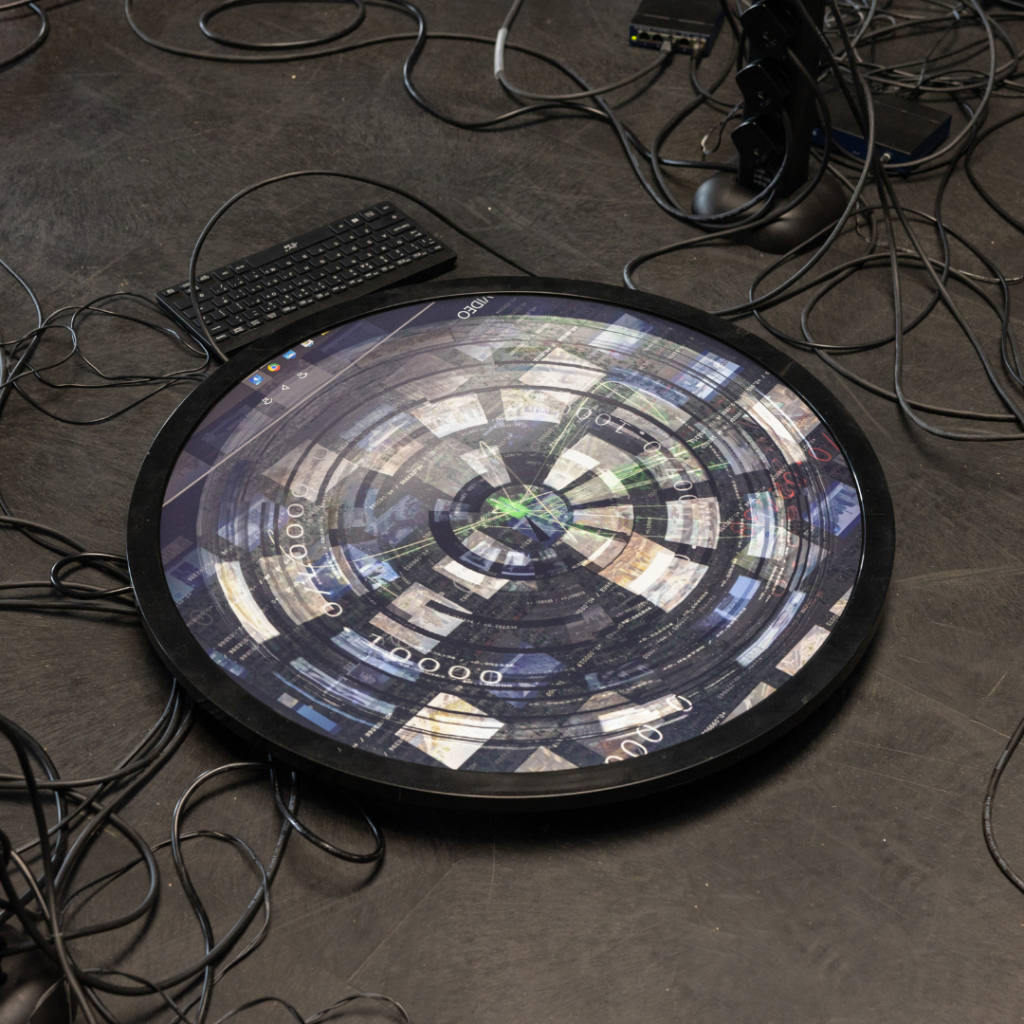
Stanza
Entangled Cities
Challenge: Machine Sapiens and the City
hosted by MEET (IT)
More Info
The project explores the future of cities governed by algorithms, creating data-driven co-creation systems that act as an autonomous “consciousness,” monitoring the invisible city in real time and generating new artworks through data visualisation.
Entangled Cities addresses the relationship between AI and the city, seeking to make visible the hidden interactions between humans and non-human agents. Will the cities of the future be governed by algorithms? Can we make a city that learns by itself (self-governing): makes its own decisions based on open data? These new artworks create speculative scenarios that address how AI will manifest its own desires through machine learning patterns, producing artworks that act as metaphors for an invisible agency in the city. The AI will facilitate the communication of a plethora of data through the artworks ranging from the quality of air, social relations, sentient data, mobility and network data.
Entangled Cities reveals the vibrant heart of Milan, exemplifying a project that merges art, technology, and urban life. It demonstrates how data visualization and neural networks can offer new perspectives and untold stories, shedding light on the city’s hidden dynamics and unveiling its invisible layers. With the support of local institutions, Stanza has been able to explore and connect with the city’s essence through its data.
+ Artist
Stanza is an independent artist based in London who has been exhibiting worldwide since 1982. Stanza focuses on the landscape of the city monitored by networked real-time information flows, and the artworks created reflect this. The technologies incorporated in his digital artworks can include custom-made sensors, networked cameras, robotics, and computers. What becomes real are the art installations, sculptures, websites, software systems, and paintings Stanza exhibits. Stanza’s artworks have won twenty international art prizes and art awards including Vidalife 6.0 First Prize Spain, SeNef Grand Prix Korea, Videobrasil First Prize Brazil, Cynet Art First Prize Germany, Share First Prize Winner Italy. His art has also been rewarded with a prestigious STARTS Residency, Nesta Dreamtime Award, an Arts Humanities Creative Fellowship, a Clarks bursary, and numerous international arts residencies.
+ Video Statement
+ Credits
The development of the main prototype for Entangled Cities involved creating a database and custom API with integrated neural network machine learning capabilities. This setup allows a series of artworks to draw from real-time AI data from Milan, with the AI continuously generating new patterns of information. To access real-time data, the artist was supported by the Data Team from Regione Lombardia – ARIA. Additionally, the artist received support from LEG members and researchers from the JRC in Ispra.
This project has been developed in the context of the S+T+ARTS in the City project. S+T+ARTS in the City has received funding from the European Commission’s Directorate-General for Communications Networks, Content and Technology under grant agreement No. LC-01984766.
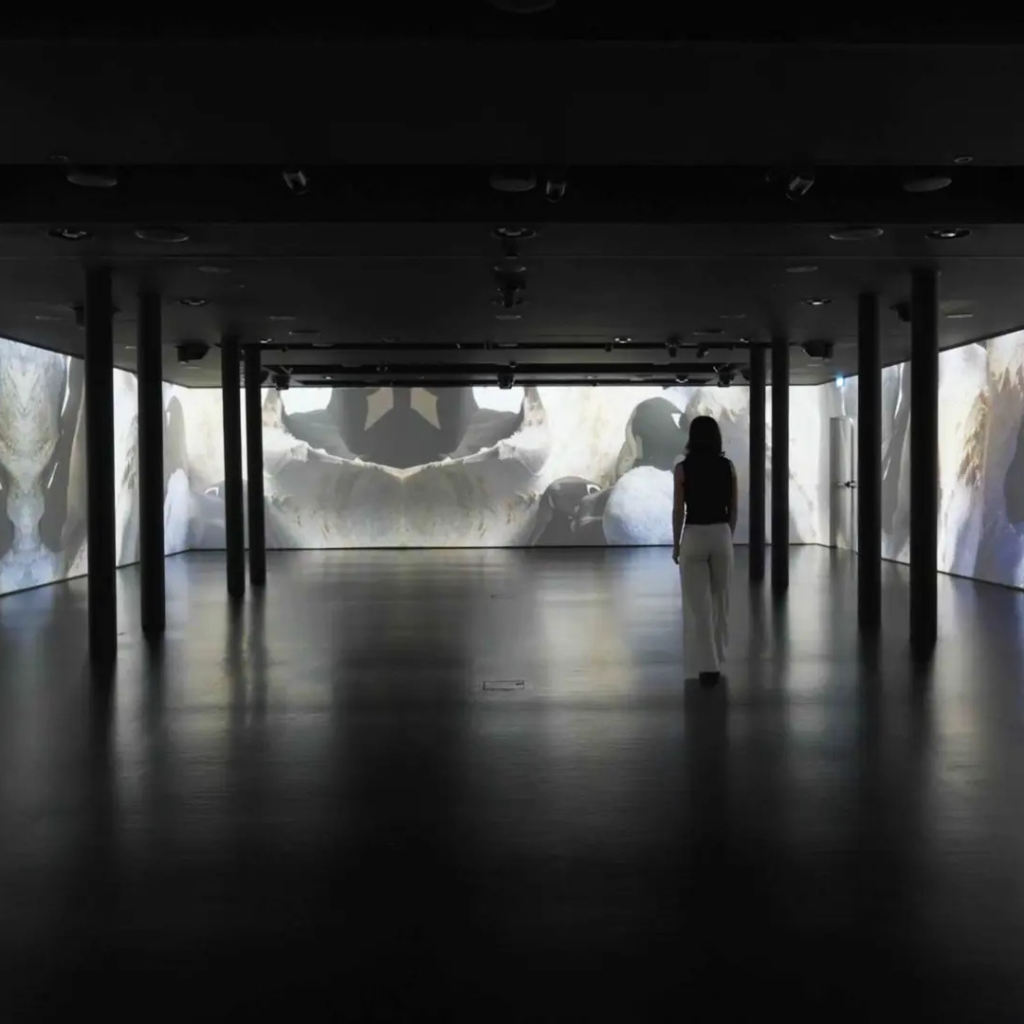
Studio Above&Below
Regenerative Symphony
Challenge: Regenerative AI for Urban Mining
hosted by MEET (IT)
More Info
Regenerative Symphony is an interactive immersive installation investigating the desirable future of critical minerals, which are rare essential building blocks of emerging technologies. The project utilises synthetic and natural material data through a custom AI model for regenerative purposes, imagining a future between 2030-2050 in which humankind is purely dependent on recycling critical minerals, rather than extracting them from the landscape, challenging the current extreme difficulty of recycling critical minerals on a social and microscopic level. The project output in the form of a generative projection focuses on revealing the beauty of reuse through the metaphor of sound symphonies, manifested as immersive audiovisual canvases which can be adjusted by visitors through predictive future data of material resources via parameters on an iPad.
The prototype is based on an AI model which reuses Rare Earth elements, rather than extracting more from the landscape. This includes working with available material data (statistics), predictive synthetic materials and predictive market data for the timeframe of 2030-2050, based on a society in which reuse is introduced by law in order to produce new electronic devices.
The residency of Studio Above&Below exemplifies cross-fertilization, collaboration, and mutual influence between artists and scientists, aimed at better understanding and studying natural and economic phenomena related to environmental sustainability. The final result reflects the duo’s distinct aesthetic and poetic sensibility.
+ Artist
Studio Above&Below is a London based art and technology practice founded by Daria Jelonek (DE) and Perry-James Sugden (GB) after graduating from the Royal College of Art. Their work combines Mixed Realities experiences (XR), digital art and data in order to grow potential connections between humans, machines and the environment – working towards preferred future interactions with our surroundings. Believing in research-based art, Studio Above&Below often works with science, technology, communities and ecologies to push the boundaries of digital media for future living. Established in 2018, over the last years the duo has created groundbreaking large-scale public artworks using advanced technologies with live data inputs in order to make invisible phenomena visible and give our environment a voice to express itself.
+ Video Statements
+ Credits
The artists collaborated with a diverse group of scientists from Area Science Park in Trieste, who specialized in data analysis, simulations, microscopy, and market research. These experts played a key role in grounding the artists’ research and development on critical minerals and recycling. Regular meetings with scientists were held to develop a bespoke AI model tailored to the project’s specific needs. In the lab, scientists working at the atomic level of materials helped the artists understand the complexities of recycling critical minerals, while also explaining the differences between elements, rare earth elements, critical minerals, and critical materials. Additionally, data experts guided the artists in building an AI model specifically designed to meet the project’s objectives.
This project has been developed in the context of the S+T+ARTS in the City project. S+T+ARTS in the City has received funding from the European Commission’s Directorate-General for Communications Networks, Content and Technology under grant agreement No. LC-01984766.
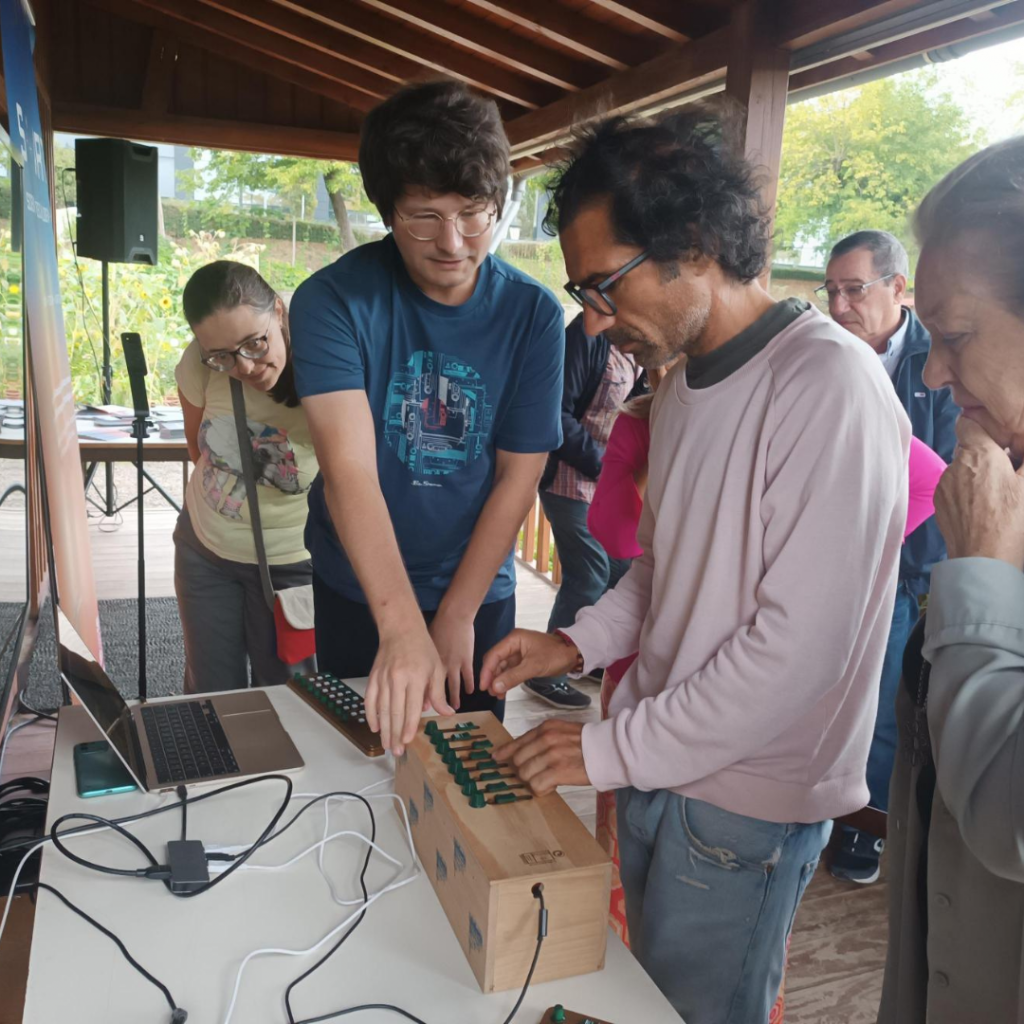
Samuel van Ransbeeck
FARMSONICS: Harvesting Insights through Real-Time Data-Driven Music
Challenge: Driving Agricultural Sustainability: Empowering Smallholder Farmers with Digital Transformation
hosted by INOVA+ (PT)
More Info
+ Artist
Samuel van Ransbeeck is a sound artist and researcher. His main interests are sonification and digital humanities. His work is interdisciplinary and collaborative, always looking for new ways of expression. He obtained his PhD in science and technology of the arts at the catholic University of Portugal and developed DataScapR, a toolbox to listen to the stock markets. He has worked at several Universities and research institution around the world like the University of Manchester, The Getúlio Vargas Foundation, INESC, and more in art-science projects, Brazilian art. and sustainable aquaculture. He has been the recipient of several large grants for art and research projects such as the Mediafutures.eu programme to develop Mumidis in collaboration with uTrigg, as well as a Brazilian government grant for talented researchers, and his PhD grant from the Portuguese Foundation for Science and Technology.
+ Video Statement
+ Credits
This project has been developed in the context of the S+T+ARTS in the City project. S+T+ARTS in the City has received funding from the European Commission’s Directorate-General for Communications Networks, Content and Technology under grant agreement No. LC-01984766.
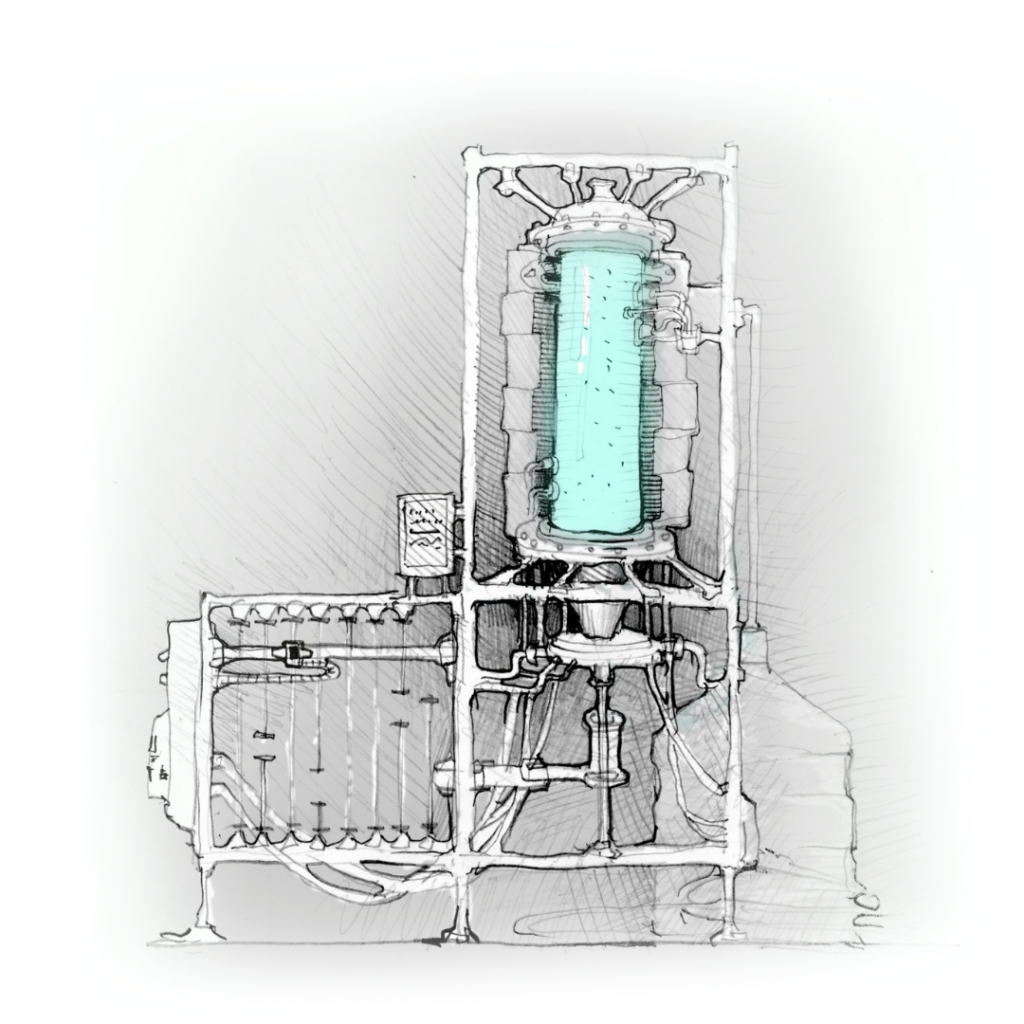
Where Dogs Run
Archean Memory Farm
Challenge: The Future of Computing
hosted by Kersnikova (SI)
More Info
The project Archean Memory Farm is based on the properties of ancient magnetotactic bacteria (MTB). MTBs are synthesized by magnetosomes formed by magnetite or greigite crystals. They use magnetosomes to move along the lines of the Earth’s magnetic field, allowing them to recognize up and down, and sink into zones with minimal oxygen. Magnetotactic bacteria (MTBs) are used in geoecology, mineralogy, biomagnetism, crystallography, biochemistry, biomedicine, and physics. Additionally, the study of biomagnetism helps in determining both climate change (warming-cooling) and changes in the geoecological situation in the sedimentary basin under study (various kinds of pollution).
The metabolic processes inside magnetotactic bacteria naturally become informational processes. The metabolism of magnetotactic bacteria allows for the input, storage, and reading of information. The properties of MTB make it possible to create an artificial geological memory as an analogue or replacement for digital memory, or as a method of algorithmic memory cultivation in living beings. Therefore, for the authors, Archean Memory Farm is a metaphysical model of the “technobiosphere” for testing the calculational abilities of an artificially constructed bio-geo-cyber medium.
The structure of the project Archean Memory Farm:
- Bacteria live and multiply in the bioreactor. Some bacteria (in portions) enter the display container with the prepared medium and magnetite control system in the magnetosomes of the bacteria (most of the colony remains in the main space of the bioreactor, while the most active part of the colony, at the moment of collection, is pumped into the display section using the magnetic separation method).
- Control of the magnetic field allows us to organize the input and playback of data, creating a bio-display.
- The dead generations of bacteria sink to the bottom naturally, allowing us to isolate dead carriers of biomagnetite and create a layer of them, making it possible to record and store information on the bearer.
- Information is recorded, read, and reproduced using a magnetic field.
The result is artificial “geological clumps of information” created jointly by human-bacterial efforts using a hybrid of artificial and natural technologies.
“The Archean Memory Farm artwork by Where Dogs Run not only displays an awareness of the data pollution caused by humans, but also with profound sensibility showcases the time required for the growth of live memory with the help of other biological organisms – bacteria.”
+ Artist
The Where Dogs Run group consists of Natalia Grekhova, Alexey Korzukhin, and Olga Inozemtseva. In their projects, the artists explore alternative computing, artificial intelligence, chemical communication between bio-and-cyber agents, olfactory pollution, biometric and other types of control. The group actively cooperated with many international institutions such as: ZKM (Germany), Goethe-Institut (Germany, Russia), KIBLA Multimedia Center (Slovenia), KGLU (Slovenia), Laznia CCA (Poland), M HKA (Belgium) and others.
+ Video Statement
+ Credits
Scientific consultants: Veronika Kozyaeva, Tatyana Kurgina, Kristijan Tkalec
Programming: Dmitry Shishov
Technical support: Gleb Andreev
Produced by: Kersnikova Institute within the framework of S+T+ARTS In the City – STARTS (Science, Technology & the Arts) in collaboration with BioTehna Laboratory
Co-funded by: European Commission, Ministry of Culture of the Republic of Slovenia, City of Ljubljana – Department of Culture, CYLAND Foundation
This project has been developed in the context of the S+T+ARTS in the City project. S+T+ARTS in the City has received funding from the European Commission’s Directorate-General for Communications Networks, Content and Technology under grant agreement No. LC-01984766.
S+T+ARTS in the City is funded by the European Union under grant agreement LC-01984766 under the STARTS – Science, Technology and Arts initiative of DG CNECT. Views and opinions expressed are those of the author(s) only and do not necessarily reflect those of the European Union or DG CNECT. Neither the European Union nor the granting authority can be held responsible for them.

